Choosing the Correct Boat Propeller


How Propellers Work
Design considerations, how to choose the correct pitch and blade count, choosing the right propeller by crowley marine.
The right prop will get the best performance out of your boat. Matching the propeller to your application, whether cruising, water skiing or performance, maximizes the power from your engine. It also helps with handling and acceleration. Use this guide to learn how different propeller designs affect efficiency, power, and speed and then learn how to choose the correct prop for your boat and application.
The propeller has a hub surrounded by blades of the same length and size. The blades are twisted so that they push water toward the rear as they turn. This pushing is what propels the boat forward in the water. Most blades rotate in a right hand (clockwise) direction when viewed from the rear. Left hand propellers are paired with a right hand propeller in dual-engine installations to keep the boat stable and reduce steering effort.

Pitch is the distance the propeller will move the boat after one revolution (not accounting for slip). A lower pitched propeller will create more power due to more engine RPMs, but the boat will move slower. A higher pitched prop allows the boat to move faster by travelling a farther distance with each rotation. When choosing a propeller, choose a pitch that will keep the engine RPM in its recommended operating range. Going under the range will cause the boat to lug, while going over can cause engine strain.

Blades have other important features built into their design. Rake is the angle between the blade and the hub. The rake angle can be flat, staying the same along the entire blade, or progressive, meaning the angle increases as it approaches the tip. Props have between 0 and 20 degrees rake. The rake angle determines how much the bow lifts out of the water. High rake propellers are ideal for light-weight, high speed boats. Too much rake, however, will strain the engine and reduce overall performance.

Some propellers are cupped, which means they have a lip on the edge of the blades. The cup creates more space between the sides of the blades, reducing ventilation and slippage. If the cup is on the tip of the blade, the blade has an increased rake angle and a higher bow lift. If the cup is on the trailing edge, it effectively increases the pitch size, and the propeller will create more power at the cost of engine speed.
Blades are also designed to prevent ventilation and cavitation. Ventilation is when air is drawn around the blades between the blade surface and the water. Ventilation increases RPM but reduces speed, especially during hard acceleration. The anti-ventilation plate mounted on the outboard helps to prevent this problem. Cavitation is caused by water flow disturbances around the blades. Disturbances cause water bubbles to boil and burst against the blades, which damages the surface and reduces performance.
The fewer number of blades a propeller has, the more efficient it is. However fewer blades will also increase the "vibration" you will feel. That’s why three blade propellers are the most common for general purpose boating. Three blades props provide the best combination of performance, speed, and efficiency. Some manufacturers also create four and five blade propellers to increase acceleration and reduce ventilation. A four blade propeller will improve handling and control for high-performance applications. Five blade propellers are good for rough water conditions and tow sports.
Finally, material is an important consideration for your propeller. Aluminum props are a great balance of cost, performance, and durability. Stainless steel is five times stronger than aluminum, dramatically improving performance and durability. Stainless steel propellers offer better acceleration and are less likely to be damaged from striking objects in the water. Stainless steel props will outlast aluminum multiple times over.

Left: a stainless steel propeller. Right: an aluminum propeller.
Before you dive into choosing a propeller, understand your boat’s intended use. Consider your average speed, load, and boating location. If you will be using the boat for multiple applications, you may need to switch props. The propeller choice directly affects the engine RPM and therefore its performance. Choose a propeller that puts the engine RPM at the midpoint or higher of the wide open throttle (WOT) range with a normal load. This operating range will translate to the highest horsepower available from your outboard. Refer to your engine operating manual for the operating range.
Once you know the operating range, consult the propeller guide for your engine to pick a combination of pitch, blade number, and material. Choose a range of propellers to perform a water test. Test the props under the same conditions that you would typically use the boat—same load, gear, and water. Set the trim angle so the boat has optimum speed on top of the water.
To test the prop, run the boat at WOT and observe the maximum engine RPM on a tachometer. If the RPM is below the recommended operating range, switch to a propeller with lower pitched blades. If the RPM is higher, switch to a propeller with higher pitched blades. Each inch of pitch size will change the RPM by 150-200 RPM. Aim for the midpoint or higher of the recommended operating range. Keep in mind that high altitudes will reduce engine power, so choose a lower pitch to achieve the same RPM as on sea level.
Engine height also affects the performance of the propeller. Once you find the right prop, adjust the engine mounting height to create the best balance between speed, maneuverability, and acceleration. Start with the anti-ventilation plate even with the bottom of the boat. Raise the engine one mounting hole at a time until performance is unacceptable, and then lower the engine one hole down.
Keep a spare prop onboard for emergency situations. One recommendation is to buy a spare propeller that is two inches lower in pitch than your standard propeller. This reduction in pitch is perfect for tow sports, such as water skiing, due to a slower acceleration and higher power.
Back- the low pressure side of the blade closest to the boat Cavitation- vaporized air caused by water flow disturbances Cup (blade)- the lip on the edge of the blade Diameter- width of the circle made by the tips of the blades Face (blade)- the high pressure side of the blade farthest from the boat Leading Edge (blade)- the blade edge closest to the boat Pitch- distance travelled by the propeller in one revolution Rake- angle between the blade and the hub Root (blade)- the edge of the blade attached to the hub RPM- revolutions per minute Slip- distance lost due to inefficiency Surface Area- the total surface of the blades Tip- the point separating the leading edge and trailing edge farthest from the hub Trailing Edge (blade)- the blade edge farthest from the boat Ventilation- air bubbles surrounding the blades WOT- wide open throttle

Propellers For Sale

Evinrude & Johnson

Yamaha Marine

Mercury Marine

Please verify you are a human
Access to this page has been denied because we believe you are using automation tools to browse the website.
This may happen as a result of the following:
- Javascript is disabled or blocked by an extension (ad blockers for example)
- Your browser does not support cookies
Please make sure that Javascript and cookies are enabled on your browser and that you are not blocking them from loading.
Reference ID: 9584cdc0-628a-11ef-b7f8-a58bcd763fd0
Powered by PerimeterX , Inc.

Service Locator
- Angler Endorsement
- Boat Towing Coverage
- Mechanical Breakdown
- Insurance Requirements in Mexico
- Agreed Hull Value
- Actual Cash Value
- Liability Only
- Insurance Payment Options
- Claims Information
- Towing Service Agreement
- Membership Plans
- Boat Show Tickets
- BoatUS Boats For Sale
- Membership Payment Options
- Consumer Affairs
- Boat Documentation Requirements
- Installation Instructions
- Shipping & Handling Information
- Contact Boat Lettering
- End User Agreement
- Frequently Asked Questions
- Vessel Documentation
- BoatUS Foundation
- Government Affairs
- Powercruisers
- Buying & Selling Advice
- Maintenance
- Tow Vehicles
- Make & Create
- Makeovers & Refitting
- Accessories
- Electronics
- Skills, Tips, Tools
- Spring Preparation
- Winterization
- Boaters’ Rights
- Environment & Clean Water
- Boat Safety
- Navigational Hazards
- Personal Safety
- Batteries & Onboard Power
- Motors, Engines, Propulsion
- Books & Movies
- Cockpit Confessions
- Communication & Etiquette
- Contests & Sweepstakes
- Colleges & Tech Schools
- Food, Drink, Entertainment
- New To Boating
- Travel & Destinations
- Watersports
- Anchors & Anchoring
- Boat Handling
How to Choose the Right Prop for Your Boat
Advertisement

The goal in propeller selection is to determine what style and size will maximize your boat's performance, while allowing your engine to operate in the recommended r.p.m. range. The correct propeller will prevent the engine from over-revving, yet allow it to reach the minimum r.p.m. where the maximum horsepower is produced, with ideal engine loading.
Using your existing propeller, determine your maximum obtainable r.p.m.. If during this test, you begin to exceed the maximum rated r.p.m. of the engine, reduce the throttle setting. If the engine over-revs beyond the maximum recommended r.p.m., you may need to increase the pitch of the propeller. Increasing the pitch increment by 2" will result in approximately a 200-400 r.p.m. drop. Also, switching from an uncupped to a cupped propeller will reduce your r.p.m (see "Cupping" paragraph below). The cupped propeller of the same pitch and diameter will typically reduce your r.p.m. by approximately 200. If you cannot reach maximum r.p.m., then pitch should be decreased. These recommendations apply to single engine installations only. For most twin engine installations it is necessary to increase pitch by 4".
Once your WOT r.p.m. falls within the recommended range of the engine manufacturer, you have a propeller that is suited to your boat with respect to r.p.m. However, you may not be satisfied with your boat's skiing performance or trolling speed. It may be advisable in these circumstances to have multiple propellers, each to accommodate different boating activities. In all likelihood, more than one propeller will be suitable for your boat and motor combination, depending on your usage. Ski boats need more top end speed, and should choose a prop with a higher pitch. Cruisers and houseboats need more performance at displacement speeds, and should use a prop with a lower pitch to achieve low-end power. It is imperative, however, that the WOT r.p.m. fall within the range specified by your engine manufacturer. If your engine is not able to reach this r.p.m. range, it's operating under an extremely loaded condition and premature failure is highly likely. Our Manager of Technical Services Bob Adriance would like to remind you that the wrong prop can wreck an engine. "I've talked to mechanics that think using the wrong prop is the single greatest cause of premature engine failure," says Bob.
While most of these comments are geared to outboard engines, some also pertain to inboards. There are other factors that can adversely affect the performance of your propeller. One of these is dings on one or more blades. Another would be having the blades out of alignment, as would occur if you hit something. Either of these could cause vibration or undue stress and ultimately damage your transmission, cutlass bearing and other components. Usually the best way to deal with a propeller issue with an outboard is to get a new prop if it's damaged or, if you're not sure you nave the correct prop, try on different ones, with the recommendation of a qualified dealer, until you've got it right. But with inboards typically you'll need to have the propeller(s) pulled and sent to a good prop shop so that they can work their "magic" on your existing prop to repair it or determine that you need another. This includes things such as "swinging it" to determine balance, checking for alignment of the blades, and actually working on blades, such as adding or removing cup and many other adjustments. You would give them all the information about your boat that they'd request and describe fully all the issues you're experiencing.
Selecting the Right Prop
The size of a propeller is defined with two sets of numbers, diameter and pitch, with pitch always following the diameter.
The diameter is two times the distance from the center of the hub to the tip of the blade. It can also be looked at as the distance across the circle that the propeller would make when rotating.
Choose the Right Prop for Your Boat
Pitch, the second number listed in the propeller description, is defined as the theoretical forward movement of a propeller during one revolution. Since there is almost always a small amount of "slip" between the propeller and the water, the actual distance travelled is slightly less.
Many of today's propellers incorporate a cup at the trailing edge of the propeller blade. This curved lip on the propeller allows it to get a better "bite" on the water, resulting in reduced ventilation and slipping, and allows for quicker acceleration, or "hole shot," in many cases. A cupped propeller also works well in applications where the motor can be trimmed so that the propeller is near the surface of the water. The cup will also typically result in a higher top end speed.
Some Problems to Avoid
Ventilation.
Ventilation occurs when surface air or exhaust gasses are drawn into the propeller blades. When this happens, boat speed is lost and engine r.p.m. climbs rapidly. This can result from excessively tight cornering, a motor that is mounted very high on the transom, or by over-trimming the engine.
Cavitation (which is often confused with ventilation) is a phenomenon of water vaporizing or "boiling" due to the extreme reduction of pressure on the back of the propeller blade. Many propellers partially cavitate during normal operation, but excessive cavitation can result in physical damage to the propeller's blade surface due to the collapse of microscopic bubbles on the blade. There may be many causes of cavitation, such as incorrect matching of propeller style to application, incorrect pitch, physical damage to the blade edges, water flow obstruction caused by parts of the boat’s hull or running gear to close to t the propeller and others.
Related Articles
The truth about ceramic coatings for boats.
Our editor investigates the marketing claims of consumer-grade ceramic coatings.
Fine-Tune Your Side Scan Fishfinder
Take your side-scanning fishfinder off auto mode, and you’ll be spotting your prey from afar in no time
DIY Boat Foam Decking
Closed-cell foam flooring helps make boating more comfortable. Here’s how to install it on your vessel
Click to explore related articles
BoatUS Editors
Contributor, BoatUS Magazine
Award-winning BoatUS Magazine is the official publication of Boat Owners Association of The United States. The magazine provides boating skills, DIY maintenance, safety, news and more from top experts.
BoatUS Magazine Is A Benefit Of BoatUS Membership
Membership Benefits Include:
Subscription to the print version of BoatUS Magazine
4% back on purchases from West Marine stores or online at WestMarine.com
Discounts on fuel, transient slips, repairs and more at over 1,200 businesses
Deals on cruises, charters, car rentals, hotel stays and more…
All for only $25/year!
We use cookies to enhance your visit to our website and to improve your experience. By continuing to use our website, you’re agreeing to our cookie policy.
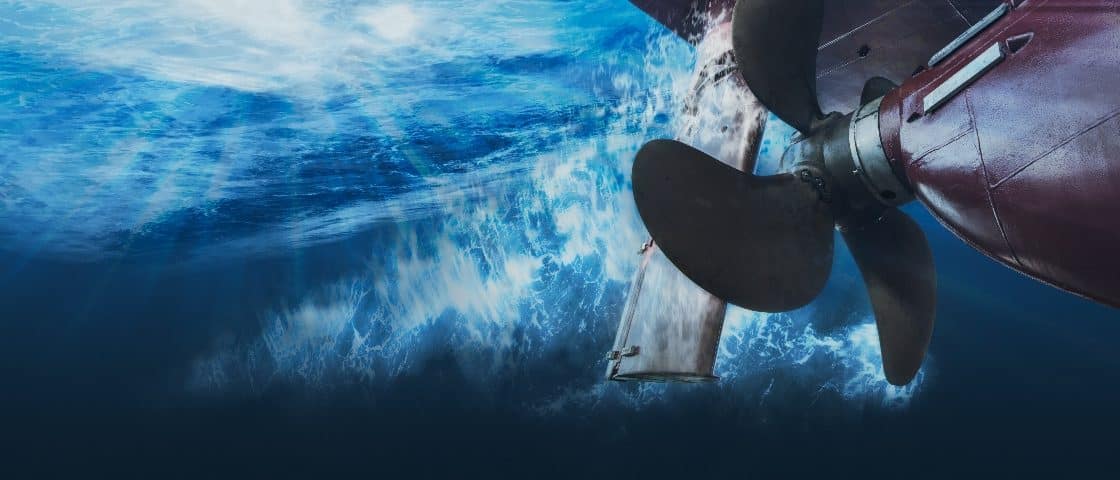
Everything You Need to Know: Boat Propeller Types

Table of Contents
Last Updated on October 12, 2023 by Boatsetter Team
Most boats are driven by propellers and there are many kinds and sizes. The optimal choice of propeller will depend on boat type, length, weight, use, and engine power. The right propeller will enhance efficiency by lowering drag, provide greater torque for faster planing speeds, and optimize performance at top speeds.
Many props are made of aluminum and are lightweight and affordable. These are good for smaller boats and tighter budgets. Stainless steel propellers are better for larger and high-performance boats due to their strength and durability but they’re more expensive. Bronze propellers are strong, rigid, and corrosion-resistant and are the priciest.
Propellers can have anywhere between two to six blades . Two-bladed props are used with smaller engines. They’re highly efficient but tend to produce vibration and aren’t powerful enough for heavier vessels. Sailboats and trolling motors often use two-bladed propellers. The higher the blade count, the more balanced the prop and the greater the thrust but also the greater the drag. Large five and six-bladed propellers are usually used with commercial boats, large yachts and ships.
Let’s go beyond materials and blade count and look at the types of propeller .
Post summary:
- Fixed propellers
- Variable pitch propellers
- Folding propellers
Feathering propellers
- Dual-props
- Surface-piercing propellers
- Specialty propellers
List your boat & start earning an avg. of $20K yearly with Boatsetter
Fixed pitch propellers & controllable pitch propellers
Fixed propellers, commonly referred to as fixed-pitch props, are a fundamental part of a boat’s propulsion system. These propellers have blades with a set angle that cannot be adjusted while the boat is running. Most props are fixed and have a constant blade angle. They’re easy to install and repair and are less expensive than others below.
On the other hand you have controllable Pitch Propeller’s (CPP ), these props are characterized by an adjustable angle. The pitch can be manipulated while the boat is in motion to optimize performance while running at different speeds. They can be more difficult to service and are expensive to purchase and install.
Folding propellers
Folding propellers are a popular choice among boaters looking for enhanced performance and maneuverability, which makes it perfect for sailing . Under sail, you will want to reduce drag as much as possible so they often opt for a folding prop where the blades fold back against the hub when not motoring.
Pro tip : Folding props allow for improved sailing speed and efficiency when the engine is not engaged.
Another way to reduce drag for sailboats is to use a feathering prop. If you’re using feathering propellers, the blades don’t fold but rather angle or rotate the blades to minimize the surface area presented to the water flow when the boat is under sail.
Dual props look as if there are two props in one. These counter-rotating props have several advantages including improved thrust, faster acceleration, better stability and handling even in reverse, and increased efficiency for better fuel economy.
They can be used on smaller boats with outboards or larger boats with stern drives or inboard engines. They can be expensive. Mercury, Suzuki and Volvo offer dual prop solutions.
Surface-piercing propellers
Designed to run partially out of the water (Surface Drive System), these props are often used with high-performance or racing powerboats because they decrease drag through the water. Boaters who crave maximum velocity and agility often opt for surface-piercing propellers, but they may require expert installation and maintenance to ensure safe and effective performance.
Toroid propeller
A new design has been introduced by Sharrow Marine where the prop blades are actually loops rather than flat blades. The purpose is to reduce vibration and increase speed at a given RPM.
Now, for the exception–locomotion through the water can also be achieved via a jet drive that uses forced water rather than a propeller to drive a boat. Jet boats can be small or large and the benefit of jet drives is that they can usually be taken into shallower waters than prop-driven craft.
Knowing which boat propeller is best
The wrong prop can create uncomfortable vibration, limit top speeds regardless of engine RPMs, create sluggish acceleration, and cause cavitation or excessive water aeration.
But, the right propeller will optimize performance including higher top speeds, create a smoother ride, and provide a more fuel-efficient solution. When deciding on a propeller, we recommend seeking a professional to know all your options. In the meanwhile, you can read more about propeller’s right here :
- What Is Propeller Pitch?
- 21-pitch Prop Vs. 19-pitch Prop
- Trimming a Boat in 3 Simple Steps
Boatsetter is the go-to app for boat rentals and on-water experiences. Whatever the adventure, we’ve got a boat for that—Set sail , start the party , go yachting , make your trophy catch , and hone your watersports skills! Download the Boatsetter app ( App Store | Google Play ). Make sure to follow @boatsetter on Instagram, and tag us in all your boat day pictures for the chance to be featured.
List. Rent. Earn—Only at Boatsetter

Zuzana Prochazka is an award-winning freelance journalist and photographer with regular contributions to more than a dozen sailing and powerboating magazines and online publications including Southern Boating, SEA, Latitudes & Attitudes and SAIL. She is SAIL magazines Charter Editor and the Executive Director of Boating Writers International. Zuzana serves as judge for SAIL’s Best Boats awards and for Europe’s Best of Boats in Berlin.
A USCG 100 Ton Master, Zuzana founded and manages a flotilla charter organization called Zescapes that takes guests adventure sailing at destinations worldwide.
Zuzana has lived in Europe, Africa and the United States and has traveled extensively in South America, the islands of the South Pacific and Mexico.
Browse by experience

Explore articles

8 Ways to Soak in the Last Bit of Summer Sun
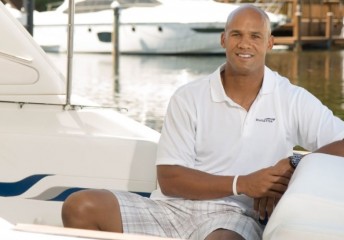
Get to Know Our Newest Boatsetter, Jason Taylor
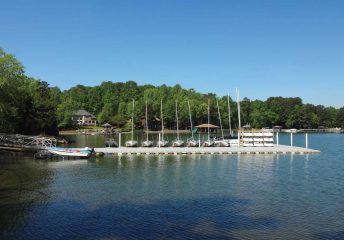
8 Best Waterfront Restaurants on Lake Norman

Lake Texoma Fishing Guide
- 2024 BOAT BUYERS GUIDE
- Email Newsletters
- Boat of the Year
- 2024 Freshwater Boat and Gear Buyers Guide
- 2024 Boat Buyers Guide
- 2024 Water Sports Boat Buyers Guide
- 2024 Pontoon Boat Buyers Guide
- Cruising Boats
- Pontoon Boats
- Fishing Boats
- Personal Watercraft
- Water Sports
- Boat Walkthroughs
- What To Look For
- Watersports Favorites Spring 2022
- Boating Lab
- Boating Safety
- Ultimate Boat Giveaway

The Parts of a Boat Propeller
- By John Tiger
- Updated: October 24, 2014
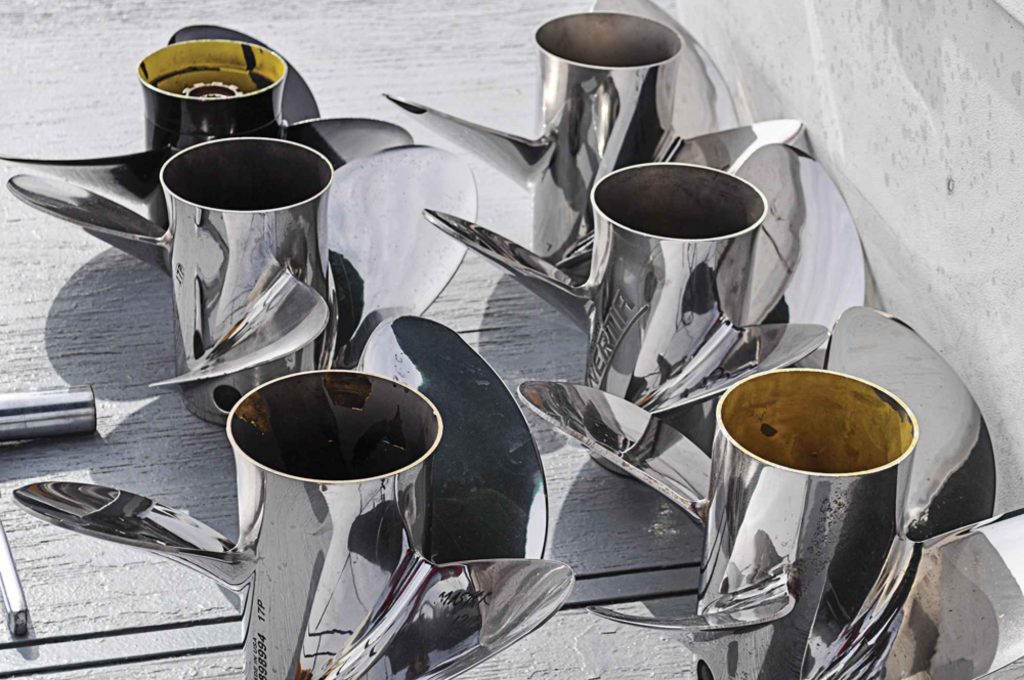
Your propeller affects every aspect of your boat’s performance: acceleration, handling, ride, turning, fuel efficiency and top speed. The trick is finding the right prop for your boat, and the right prop for how you use your boat.
It would be easy if props were simple, but boat propellers are science and engineering, tribal knowledge, feel, art and, yes — a little magic. Like the ocean, the subject is broad and deep, and those attempting to navigate it often find the endeavor is fraught with rough spots. As such, many boaters find it hard to solidify propeller knowledge.
On the theory that smaller chunks are easier to swallow, we’re going to zoom in and focus primarily on a smaller piece of the propeller pie. Join us as we define and explain the parts of the propeller. This should prove a neat refresher for old salts, while others will be provided the basis for intelligent conversation with boat dealers, prop vendors and fellow boating enthusiasts.
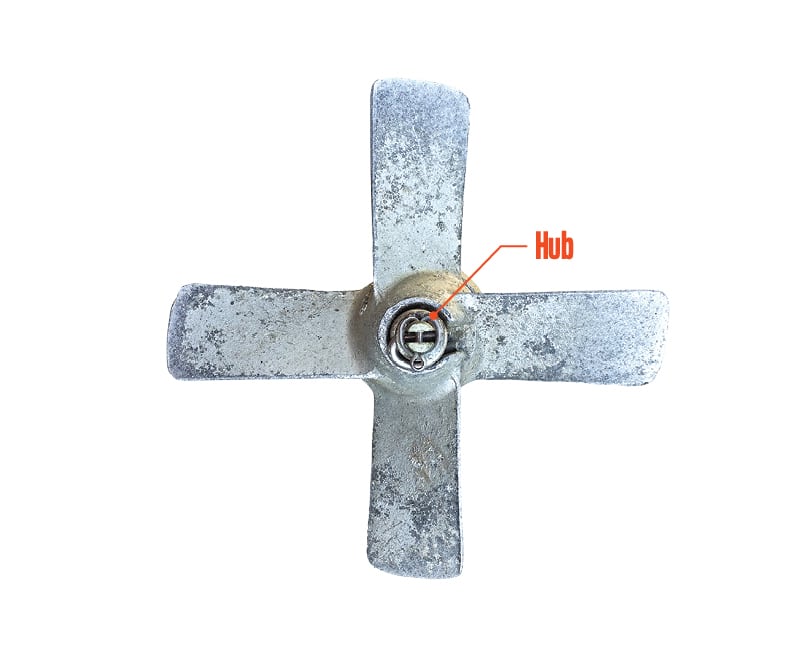
Different propeller configurations exist for different boating applications. While there are too many variations and applications to list all in this article, here are many popular types.
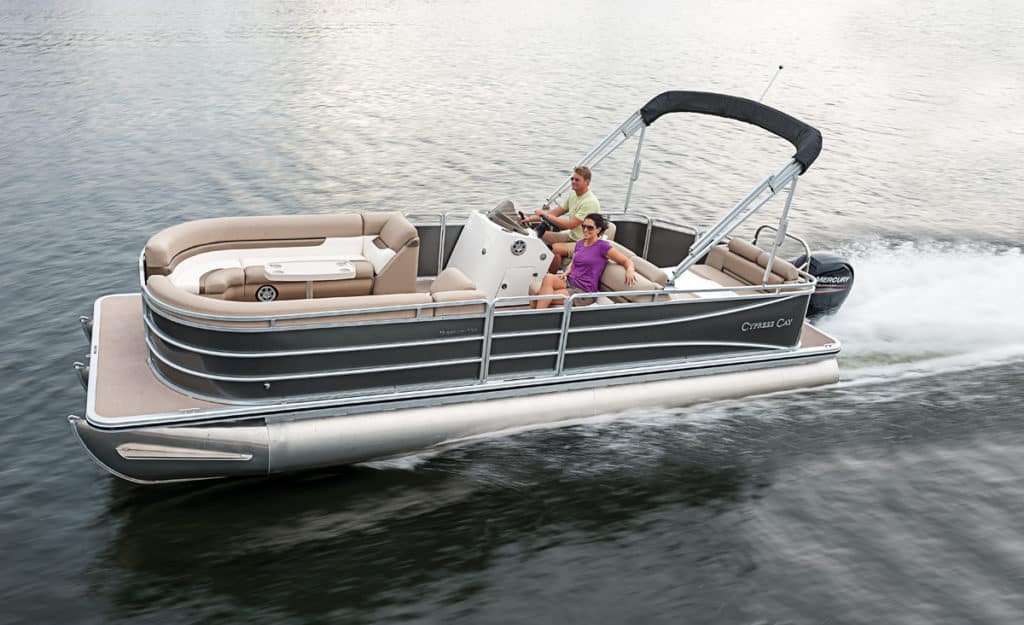
- More: Boats , Engines , propellers
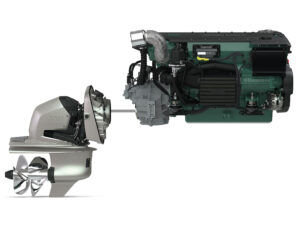
Volvo Penta D6 Diesel DPI
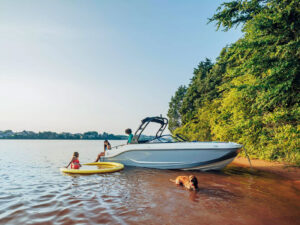
Bayliner 2024 D Series Deckboats Debut
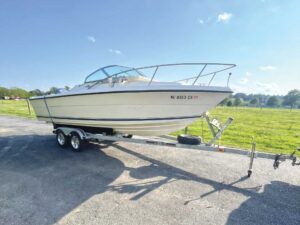
Is Your Trailer Right for Your Boat?
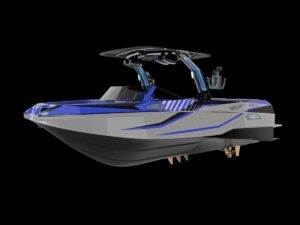
Genesis Marine Technologies 24: Our First Impression
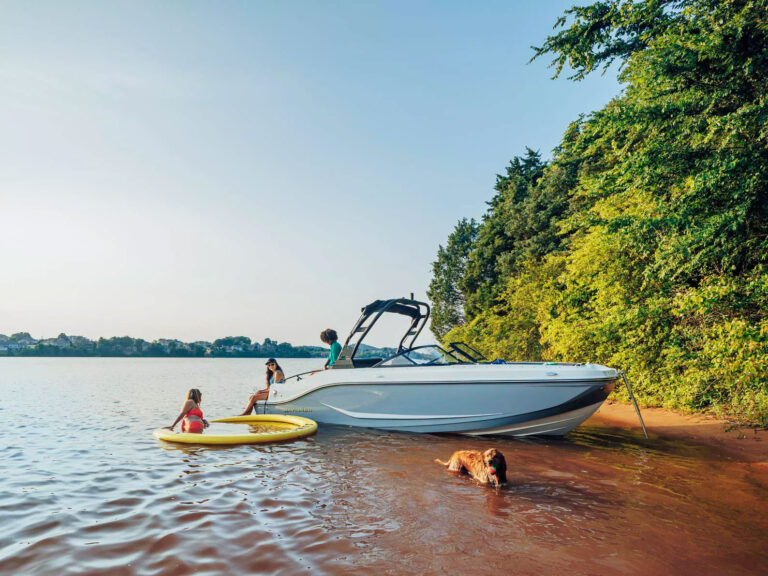
How to Choose a Trailer Winch

Best Non Skid Boat Deck Paint

- Digital Edition
- Customer Service
- Privacy Policy
- Terms of Use
- Cruising World
- Sailing World
- Salt Water Sportsman
- Sport Fishing
- Wakeboarding
Many products featured on this site were editorially chosen. Boating may receive financial compensation for products purchased through this site.
Copyright © 2024 Boating Firecrown . All rights reserved. Reproduction in whole or in part without permission is prohibited.

- Engine_Fuel & Props
Boat Propellers

Prop Selection Guide
Find the right prop for your boat
- Engine Manufacturer: -- Evinrude Force Honda Johnson Mariner Mercruiser Stern Drive Mercury OMC Stern Drive Parsun Suzuki Tohatsu/Nissan Volvo Penta Yamaha Yanmar Stern Drive
- Engine Horsepower: --
- Engine Model: --
- Engine Year: --
- Prop Pitch: --

Quicksilver Nemesis Propellers
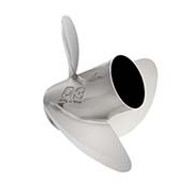
Quicksilver Q3 Propellers

Quicksilver Q4 Propellers

Quicksilver Silverado Propellers
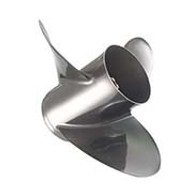
Quicksilver Thunderbolt Propellers
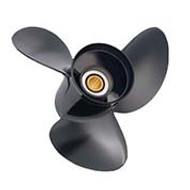
Solas Amita 3 Propeller
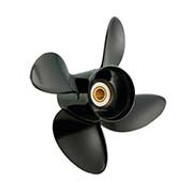
Solas Amita 4 Propeller

Solas Lexor Propeller
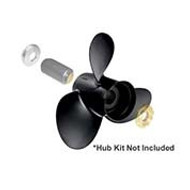
Solas Rubex 3 Propellers
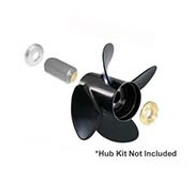
Solas Rubex 4 Propellers

Solas Rubex C4 Propeller

Solas Rubex HR3 Propeller

Solas Rubex HR4 Propeller
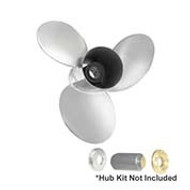
Solas Rubex L3 Propeller
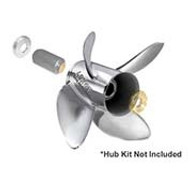
Solas Rubex L4 Propeller

Solas Rubex NS3 Propeller
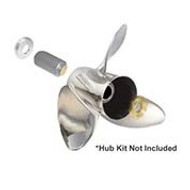
Solas Rubex S3 Scorpion
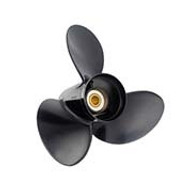
Solas Rubex iPOP Propeller

Solas Saturn 4 Propeller
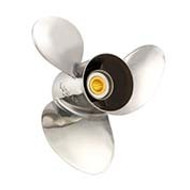
Solas Saturn Propeller

Solas Titan 3 Propeller
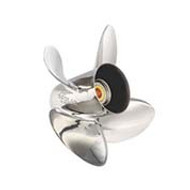
Solas Titan 4 Propeller
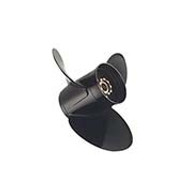
Mercury Black Max Propellers
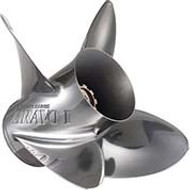
Mercury Bravo I Propellers
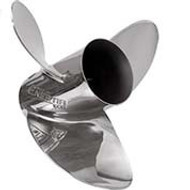
Mercury Enertia Eco Propellers
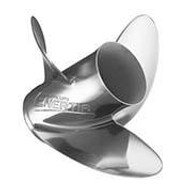
Mercury Enertia Propellers

Mercury Fury 4 Propellers

Mercury Fury Propellers
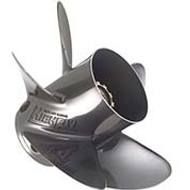
Mercury HighFive Propellers

Mercury Laser II Propellers
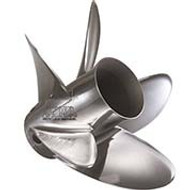
Mercury Maximus Propellers

Mercury Mirage Plus Propellers

Mercury Revolution 4 Propellers
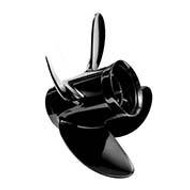
Mercury Spitfire Propellers

Mercury Spitfire X7 Propellers

Mercury Tempest Plus Propellers
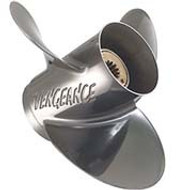
Mercury Vengeance Propellers

Michigan Wheel Apollo Propellers

Michigan Wheel Ballistic Propellers
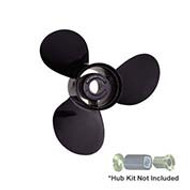
Michigan Wheel Vortex Propellers

Turning Point Express Propellers

Turning Point Hustler Propellers
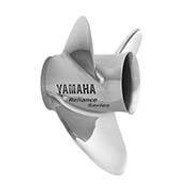
Yamaha Reliance Propellers
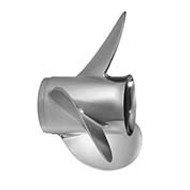
Yamaha Talon SS Propellers


Yamaha Talon GP Propellers

Yamaha Talon Pontoon Propellers

Yamaha Talon SS4 Propellers

Yamaha Painted Stainless Steel Propellers

Yamaha Performance 3 Propellers
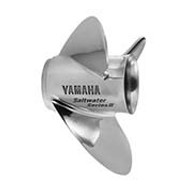
Yamaha Saltwater Series II Propellers
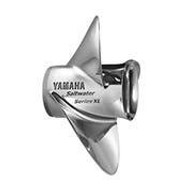
Yamaha Saltwater Series XL Propellers

Yamaha Saltwater Series XL4 Propellers
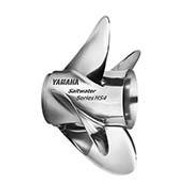
Yamaha Saltwater Series HS4 Propellers

Yamaha Talon Propellers
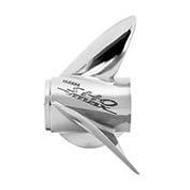
Yamaha V MAX SHO Propellers
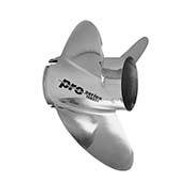
Yamaha Pro Series Propellers

Solas 102 Rubex Hub Kit
Solas 102 Rubex Hub Kit Solas RBX102 Rubex Hub Kit For use with Rubex Interchangeable Hub System Propellers. Also works with Michigan Wheel, Mercury Flo Torq and Turning Point propellers with interchangeable hubs...

Turning Point 501 Hub Kit
Turning Point 501 Hub Kit Interchangeable with Mercury Flo-Torq II, Michigan Wheel XHS, and Solas Rubex hub systems. Application Mercury/Mariner 4.25" Gearcase 15 Spline 4.75" Gearcase 15 Spline 40-150 HP Johnson 4.25" Gearcase 15...

Michigan Wheel 202 Hub Kit
Michigan Wheel 202 XHS Hub Kit Interchangeable with Mercury Flo-Torq II, Turning Point, and Solas Rubex hub systems. Application Force 75-150HP , 1995-Present , 15 Spline Propshaft Honda 75-90HP , 1995-1998 , 15 Spline...

Mercury Black Max 14.25x 21P Propeller 48-832832A45
Mercury Black Max Propeller 14.25x 21P RH 48-832832A45 Mercury Black Max Propellers are well-balanced aluminum props. These propellers are a great choice for engines less than 250 HP with top speeds less than 50 MPH/80 KPH. Mercury Black Max...

Solas Amita 3 Blade 14.5 X 19P Propeller 1511-145-19
Solas Amita 3 Aluminum 3 Blade Propeller w/ Rubber Hub Exclusive squeeze cast process. Stronger blades with better performance. Outstanding acceleration and top speed.

Solas Pin Drive 8.25 X 8P Propeller 2011-083-08P
Solas Pin Drive 8.25 X 8P Aluminum Boat Propeller 2011-083-08P

Solas 203 Rubex Hub Kit
Solas RBX203 Rubex Hub Kit For use with Rubex Interchangeable Hub System Propellers. Also works with Michigan Wheel, Mercury Flo Torq and Turning Point propellers with interchangeable hubs. Application: Yamaha 115 HP & 130 HP 1984 & Newer,...

Solas Amita 3 Blade 13.25 X 17P Propeller 2411-133-17

Mercury Black Max 14.5x 19P Propeller 48-832830A45
Mercury Black Max Propeller 14.5x 19P RH 48-832830A45 Mercury Black Max Propellers are well-balanced aluminum props. These propellers are a great choice for engines less than 250 HP with top speeds less than 50 MPH/80 KPH. Mercury Black Max...
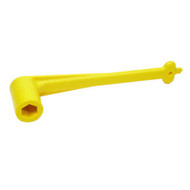
Mercury - Mercruiser 91-859046M-4 Prop Wrench 1-1/16"
Mercury - Mercruiser 91-859046M-4 Prop Wrench 1-1/16" Fits: 1-16" Nut (Yellow) Most sterndrives and V4/V6 Outboards

Mercury - Mercruiser 835258K-2 Flo-Torq II Solid Hub Kit
Mercury - Mercruiser 835258K-2 Flo-Torq II Solid Hub Kit Genuine OEM Mercury - Mercruiser part. Flo-Torq II hub kits are specially designed to cushion and protect the drivetrain from most impacts. The Flo-Torq II System also provides unmatched...

Solas 203B Rubex Hub Kit
Solas RBX-203B Rubex Hub Kit For use with Rubex Interchangeable Hub System Propellers. Also works with Michigan Wheel, Mercury Flo Torq and Turning Point propellers with interchangeable hubs. Application: Yamaha 115 HP & 130 HP 1984 &...

Turning Point 503 Hub Kit
Turning Point 503 Hub Kit Interchangeable with Mercury Flo-Torq II, Michigan Wheel XHS, and Solas Rubex hub systems. Application Evinrude/Johnson/OMC 4.25" Gearcase 13 Spline 40-140 HP

Solas Plastic 7-1/4 X 6P Propeller 0001-073-06-P

Mercury Black Max 13-1/4x 17P Propeller 48-77344A45
Mercury Black Max Propeller 13-1/4 x 17P RH 48-77344A45 Mercury Black Max Propellers are well-balanced aluminum props. These propellers are a great choice for engines less than 250 HP with top speeds less than 50 MPH/80 KPH. Mercury Black Max...

Turning Point 11 Hub Kit
Turning Point 11 Hub Kit Interchangeable with Mercury Flo-Torq II, Michigan Wheel XHS, and Solas Rubex hub systems. Application Evinrude/Johnson 3.5" Gearcase 13 Spline 25-75 HP Mercury/Mariner 3.5" Gearcase 13 Spline 25-75...

Turning Point Hustler 3 Blade 14.25x 21P Propeller 2150-2111
Turning Point Hustler 3-Blade Propeller Stainless Steel performance at aluminum price. Performance tuned rake angles add to boat lift and overall performance. Tuned progressive pitch angles minimizes slip and increases fuel economy. Squeeze cast...

Solas Rubex 3 Blade 14.5 X 19P Propeller 9511-145-19
Solas Rubex 3 Aluminum 3 Blade Propeller w/ Interchangeable hub Exclusive squeeze cast process. Stronger blades with better performance. Outstanding acceleration and top speed.

Solas Amita 4 Blade 14.3 X 19P Propeller 1513-143-19
Solas Amita 4 Aluminum 4 Blade Propeller w/ Rubber Hub Exclusive squeeze cast process. Great acceleration and midrange performance. Great stern lift & handling

Mercury - Mercruiser 835257K1 Flo-Torq II Hub Kit
Mercury - Mercruiser 835257K1 Flo-Torq II Hub Kit Assembly The Mercury Flo-Torq II Hub Kit is specially designed to cushion and protect the drivetrain from most impacts. The Flo-Torq II system also provides unmatched corrosion protection. For use...
Wholesale Marine Boat Propellers
Selecting the right boat propeller is key to maximizing your boat’s performance. You might well be pleased with the performance of the propeller that came standard with the motor, but you may be wondering if there might be room for improvement. For advice when selecting the right boat prop for your boat from our wide inventory of competitively-priced propellers, speak to the boating professionals at Wholesale Marine. We stock Michigan Wheel , Turning Point , Bravo and Quicksilver boat propellers to fit Evinrude , MerCruiser , Mercury , Johnson , Volvo Penta, Yamaha, Suzuki, Honda and more. Additionally we offer sturdy stainless steel, lightweight but durable aluminum and traditional bronze boat props for nearly every craft.
Tips for Knowing When to Replace Boat Propellers
How can you tell if your boat propeller requires replacement? There may be an obvious reason for doing so such as if your prop has sustained visible damage to a blade. However, even when your propeller is performing within manufacturer’s recommended guidelines, often there is room for performance improvement. Reasons for replacement include:
● Close inspection reveals broken or cracked blades. ● Upgrade to different materials such as aluminum or stainless steel. ● Upgrade to a different number of blades, from 3 to 4 for example. ● Upgrade to a larger size boat propeller to improve acceleration and top end performance. ● Want to carry a replacement propeller on board “just in case.”
Select the Right Boat Propellers for Maximum Performance
The drive train is an important system on any engine-driven vehicle, car, truck or boat. For land vehicles, the system concludes at the tires, where the rubber meets the road. There, the choice is simple: select the right tire for the roadway and intended vehicle use. The difference for water-based craft is, of course, that the drive train ends at the propeller which is the liaison of horsepower to the water. Selecting the right propeller is very important. Boat propellers are available in a wide assortment of sizes and shapes. Sizes are referred to in terms of diameter and pitch. To make the best selection, sync the propeller to the manufacturer’s wide open throttle (WOT) range. The right propeller will turn the minimum engine RPM’s required by the manufacturer with its throttle fully advanced.
The next consideration is diameter. This will also determine the propeller’s RPM capabilities. Overall engine performance can be improved by selecting the right boat prop. The number of blades is also a consideration. “Standard rule” is the fewer blades, the faster the vessel, however, this rule is not cast in stone. The deciding factor will always be the particular application the boat is used for in order to determine the number of blades required to achieve the best engine performance.
When shopping for a new boat propeller, we invite you to speak with the boating pros at Wholesale Marine. We are boating enthusiasts too and understand every aspect of boat maintenance and repair. We’ll be glad to listen to your requirements and recommend the best boat propeller options for your craft based on how you use it. When you have a boating supply need or just want to explore your upgrade options with a pro who shares your passion for all things nautical, call us at (877) 388-2628.
Subscribe to our Newsletter
Get the latest updates on new products and upcoming sales
Oops, something went wrong. Please try again.
You are now logged in!
- My account Close My account Log out
- Compare products list
You have no items in your shopping cart.
- Inboard Propellers
- Outboard Propellers
- Stern drive boat props
- PWC Impellers
- Ski Wake Boat Props
- Volvo Duo Props
- Prop Pullers
- Prop Guide & Sizings
- Brass cutless bearings
- Non Metallic
- Flanged bearings
- Stave bearings
- Shaft Zincs for sale
- Rudder Boat Zincs
- Plate Zincs
- Stainless Steel Shafts
- Shaft Seals
- Packing Boxes
- Shaft Accessories
- Deck Hardware
- Drivetrain Hardware
- Exhaust Fittings
- Hose and Clamps
- Steering Hardware
- Plumbing Fittings
- Shafting Accessories
- Miscellaneous Hardware
- Michigan Wheel
- Zimar Zinc Anodes
- Tides Marine
- SOLAS boat propellers
- ACME Marine
- Volvo Penta Duo Props
- Buck Algonquin Marine Hardware
- Boat Props /
- Outboard Propellers /
Boat props by outboard marine engine
Propeller Depot is the ultimate source for replacing your outboard boat prop, you will find the best prices on all of the best aluminum and stainless boat propellers.
We have cross-referenced all of our online boat propellers and hub kits with the corresponding engines, making it easier for you to find the right propeller. By clicking on the appropriate engine, you will be presented a list of all models that we currently support for a particular engine, and the boat propellers that fit that model. Propeller Depot is your best source for all outboard marine engine boat props, save big today!
- Evinrude Propellers
- Johnson Propellers
- Mercury Propellers
- Mariner and Sea Ray Propellers
- Honda Propellers
- US Marine Propellers
- Suzuki boat props
- Yamaha boat props
- Nissan boat props
- Tohatsu boat props
- Chrysler Propellers
- Force boat props
| Product(s) | Diameter | Pitch | Rotation | # Blades | Engine Type | Material | # Splines | Hub Kit | Price | |||||
|---|---|---|---|---|---|---|---|---|---|---|---|---|---|---|
| : 15-1/2 inch : 25.50 : Left Hand (LH) : 3 : Suzuki : Stainless Steel : 25 Tooth Spline : Not Required (rubber pressed in hub) | 15-1/2 inch | 25.50 | Left Hand (LH) | 3 | Suzuki | Stainless Steel | 25 Tooth Spline | Not Required (rubber pressed in hub) | $754.99 | |||||
| : 15-1/2 inch : 24 : Left Hand (LH) : 3 : Suzuki : Stainless Steel : 25 Tooth Spline : Not Required (rubber pressed in hub) | 15-1/2 inch | 24 | Left Hand (LH) | 3 | Suzuki | Stainless Steel | 25 Tooth Spline | Not Required (rubber pressed in hub) | $754.99 | |||||
| : 15-1/2 inch : 22.50 : Left Hand (LH) : 3 : Suzuki : Stainless Steel : 25 Tooth Spline : Not Required (rubber pressed in hub) | 15-1/2 inch | 22.50 | Left Hand (LH) | 3 | Suzuki | Stainless Steel | 25 Tooth Spline | Not Required (rubber pressed in hub) | $754.99 | |||||
| : 15-1/2 inch : 21 : Left Hand (LH) : 3 : Suzuki : Stainless Steel : 25 Tooth Spline : Not Required (rubber pressed in hub) | 15-1/2 inch | 21 | Left Hand (LH) | 3 | Suzuki | Stainless Steel | 25 Tooth Spline | Not Required (rubber pressed in hub) | $754.99 | |||||
| : 15-1/2 inch : 19.50 : Left Hand (LH) : 3 : Suzuki : Stainless Steel : 25 Tooth Spline : Not Required (rubber pressed in hub) | 15-1/2 inch | 19.50 | Left Hand (LH) | 3 | Suzuki | Stainless Steel | 25 Tooth Spline | Not Required (rubber pressed in hub) | $754.99 | |||||
| : 14-1/8 inch : 25.50 : Right Hand (RH) : 4 : Suzuki : Stainless Steel : 15 Tooth Spline : Not Required (rubber pressed in hub) | 14-1/8 inch | 25.50 | Right Hand (RH) | 4 | Suzuki | Stainless Steel | 15 Tooth Spline | Not Required (rubber pressed in hub) | $799.00 | |||||
| : 14-1/8 inch : 24 : Right Hand (RH) : 4 : Suzuki : Stainless Steel : 15 Tooth Spline : Not Required (rubber pressed in hub) | 14-1/8 inch | 24 | Right Hand (RH) | 4 | Suzuki | Stainless Steel | 15 Tooth Spline | Not Required (rubber pressed in hub) | $799.00 | |||||
| : 14-1/8 inch : 22.50 : Right Hand (RH) : 4 : Suzuki : Stainless Steel : 15 Tooth Spline : Not Required (rubber pressed in hub) | 14-1/8 inch | 22.50 | Right Hand (RH) | 4 | Suzuki | Stainless Steel | 15 Tooth Spline | Not Required (rubber pressed in hub) | $799.00 | |||||
| : 14-1/8 inch : 21 : Right Hand (RH) : 4 : Suzuki : Stainless Steel : 15 Tooth Spline : Not Required (rubber pressed in hub) | 14-1/8 inch | 21 | Right Hand (RH) | 4 | Suzuki | Stainless Steel | 15 Tooth Spline | Not Required (rubber pressed in hub) | $799.00 | |||||
| : 14-1/8 inch : 19.50 : Right Hand (RH) : 4 : Suzuki : Stainless Steel : 15 Tooth Spline : Not Required (rubber pressed in hub) | 14-1/8 inch | 19.50 | Right Hand (RH) | 4 | Suzuki | Stainless Steel | 15 Tooth Spline | Not Required (rubber pressed in hub) | $799.00 | |||||
| : 15 inch : 14 : Left Hand (LH) : 3 : Various Engine Types - Please verify : Stainless Steel : Determined by Hub Kit : Required | 15 inch | 14 | Left Hand (LH) | 3 | Various Engine Types - Please verify | Stainless Steel | Determined by Hub Kit | Required | $578.99 | |||||
| : 14-4/5 inch : 20 : Left Hand (LH) : 3 : Various Engine Types - Please verify : Stainless Steel : Determined by Hub Kit : Required | 14-4/5 inch | 20 | Left Hand (LH) | 3 | Various Engine Types - Please verify | Stainless Steel | Determined by Hub Kit | Required | $578.99 | |||||
| : 14-4/5 inch : 19 : Left Hand (LH) : 3 : Various Engine Types - Please verify : Stainless Steel : Determined by Hub Kit : Required | 14-4/5 inch | 19 | Left Hand (LH) | 3 | Various Engine Types - Please verify | Stainless Steel | Determined by Hub Kit | Required | $578.99 | |||||
| : 14-4/5 inch : 18 : Left Hand (LH) : 3 : Various Engine Types - Please verify : Stainless Steel : Determined by Hub Kit : Required | 14-4/5 inch | 18 | Left Hand (LH) | 3 | Various Engine Types - Please verify | Stainless Steel | Determined by Hub Kit | Required | $578.99 | |||||
| : 14-4/5 inch : 17 : Left Hand (LH) : 3 : Various Engine Types - Please verify : Stainless Steel : Determined by Hub Kit : Required | 14-4/5 inch | 17 | Left Hand (LH) | 3 | Various Engine Types - Please verify | Stainless Steel | Determined by Hub Kit | Required | $578.99 | |||||
| : 14-4/5 inch : 16 : Left Hand (LH) : 3 : Various Engine Types - Please verify : Stainless Steel : Determined by Hub Kit : Required | 14-4/5 inch | 16 | Left Hand (LH) | 3 | Various Engine Types - Please verify | Stainless Steel | Determined by Hub Kit | Required | $578.99 | |||||
| : 14-1/2 inch : 21 : Left Hand (LH) : 3 : Various Engine Types - Please verify : Stainless Steel : Determined by Hub Kit : Required | 14-1/2 inch | 21 | Left Hand (LH) | 3 | Various Engine Types - Please verify | Stainless Steel | Determined by Hub Kit | Required | $578.99 | |||||
| : 14-1/4 inch : 22 : Left Hand (LH) : 3 : Various Engine Types - Please verify : Stainless Steel : Determined by Hub Kit : Required | 14-1/4 inch | 22 | Left Hand (LH) | 3 | Various Engine Types - Please verify | Stainless Steel | Determined by Hub Kit | Required | $578.99 | |||||
| : 14 inch : 24 : Left Hand (LH) : 3 : Various Engine Types - Please verify : Stainless Steel : Determined by Hub Kit : Required | 14 inch | 24 | Left Hand (LH) | 3 | Various Engine Types - Please verify | Stainless Steel | Determined by Hub Kit | Required | $578.99 | |||||
| : 15 inch : 14 : Right Hand (RH) : 3 : Various Engine Types - Please verify : Stainless Steel : Determined by Hub Kit : Required | 15 inch | 14 | Right Hand (RH) | 3 | Various Engine Types - Please verify | Stainless Steel | Determined by Hub Kit | Required | $578.99 | |||||
| : 14-4/5 inch : 20 : Right Hand (RH) : 3 : Various Engine Types - Please verify : Stainless Steel : Determined by Hub Kit : Required | 14-4/5 inch | 20 | Right Hand (RH) | 3 | Various Engine Types - Please verify | Stainless Steel | Determined by Hub Kit | Required | $578.99 |
- Outboard props by brand
- Outboard propellers by Material
- Propeller Cases
- Cutless Bearings
- Shafts & Seals
- Boat Hardware
- 48-13702A46
- 48-16314A46
- 48-16316A46
- 48-16318A46
- 48-832828A45
- 48-832830A45
- Get in Touch
- Shipping and Return Policy
- Privacy Notice
- Conditions of Use
- Customer info
- Shopping cart
Payment options
- 6-15 Horsepower
- 8, 9.9-15 Horsepower
- 9.9-15 Horsepower (4-Stroke)
- 10-25 Horsepower
- 14-28 Horsepower
- 15-35 Horsepower
- 25-30 Horsepower (4-Stroke)
- 40-50 Horsepower (4-Stroke)
- 40-75 Horsepower (3-3/8" Gearcase)
- 40-140 Horsepower (4-1/4" Gearcase)
- 90, 115 & 140 Horsepower (4-Stroke)
- 90-300 Horsepower (Includes All E-Tec G1 Engines)
- 3.5-8 Horsepower
- 9.9-15 Horsepower
- 20-60 Horsepower
- 25 Horsepower
- 40-75 Horsepower
- 85-150 Horsepower w/ Dual Exhaust
- 7.5-10 Horsepower
- 8-20 Horsepower
- 25-30 Horsepower
- 35-60 Horsepower
- 60-130 Horsepower
- 115-250 Horsepower
- 4-6 Horsepower
- 7.5-9.8 Horsepower
- 8 Horsepower Mariner
- 8-9.9 Horsepower
- 9.9, 15/20 Horsepower
- 9.9-25 Horsepower
- Merc 20 / Merc 200
- 15-25 Horsepower - Mariner
- 25-30 Horsepower - Mariner
- 25-30 Horsepower - Mercury 4-Stroke
- 25-70 Horsepower
- Models 402-500(1974-76), 650, 60 HP
- 40-140 Horsepower
- 135-300 Horsepower
- 8-9.8 Horsepower 4-Stroke
- 9.9-20 Horsepower
- 25-30 Horsepower 4-Stroke
- 35-50 Horsepower
- 50-70 Horsepower
- 60-140 Horsepower
- 8-15 Horsepower
- 35-65 Horsepower
- DF50 - DF140 Horsepower
- 150-300 Horsepower
- 6 - 9.9 Horsepower
- 8 Horsepower
- 15-28 Horsepower
- 20-30 Horsepower
- 25-60 Horsepower
- 50-130 Horsepower
Outboard & Sterndrive Propeller Repairs
- Mercury Mercruiser Bravo II
- Mercruiser, Alpha One, Bravo One
- Model 14 Large Gearcase
- Model 400 and Cobra
- Sea Drive 4-1/4" Gearcase
- Model 800, King Cobra, Sea Drive -4-3/4" Gearcase
- Volvo Penta SX and Cobra SX Propellers
- Volvo Penta Duoprop Propellers
- Volvo Penta Short and Long Hub Propellers
- Volvo Penta Saildrive (S-Drive) Propellers
- Evinrude / Johnson Prop Hardware
- Miscellaneous Outboard & Sterndrive Accessories
- Honda Prop Hardware
- Mercury / Mariner Prop Hardware
- Suzuki Prop Hardware
- Tohatsu / Nissan
- Yamaha Prop Hardware
- Michigan Wheel XHS Hub Kits
- Quicksilver Flo-Torq Hub Kits
- Solas Rubex Propeller Hub Kits
- Powertech Cushion Lok Hubs and Accessories
- Anti-Rattle Hub Kits
- Volvo Penta S-Drive Hardware
- Volvo Penta Duoprop Type A, B, C (280 DP, 290 DP)
- Volvo Penta Duoprop Type D & F (DPS & DPS-B)
- Volvo Penta Duoprop Type G (DPH)
- Volvo Penta Long Hub Hardware (AQ 280, 290)
- Volvo Penta Short Hub Hardware (AQ 270, 280, 290)
- Volvo Penta Type H (DPH & DPI)
- Mercruiser Bravo II
- Mercruiser Bravo III
- Marine Hardware, Tools, and Accessories
- Anchor Bore Reducing Propeller Bushings
- Michigan Wheel Inboard Propellers
- ZF Propellers
- Propspeed Foul Release Coating
- Drivesaver Flexible Shaft Coupling
- Poly Flex Flexible Shaft Couplings
- GLIDE ULTRA Marine Dripless Shaft Seal Systems
- Inboard Propeller Nut Kit Sets
- Propeller Shaft Keys
- SAE and Metric Propeller Nuts and Accessories
- Cutless Bearings By Duramax and Morse
- GLIDE Strut Bearings for 3/4" to 2-1/2" Shafts
- Allison Transmission Couplers
- Atomic Four (Universal) Transmission Couplers
- Borg Warner Transmission Couplers
- Capitol Transmission Couplers
- Hurth Transmission Couplers
- Newage Transmission Couplers
- Paragon Transmission Couplers
- Twin Disc Transmission Couplers
- Volvo Penta Transmission Couplers
- Yanmar Transmission Couplers
- ZF Transmission Couplers
- Shaft Coupler Bolts, Pullers, and Accessories
- Bronze Rudder Collars
- GLIDE Dripless Shaft Seals for Surf, Wake Boats
- GLIDE Seal Systems Spare Seals and Install Tools
- GLIDE Strut Bearings for Ski, Wake, and Surf Boats
- Prop Pullers for Ski, Wakeboard, & Surf Boats
- Ski, Surf, Wake Boat Cutless Bearings by Duramax
- Acme Ski Boat Propellers
- OJ Ski, Wakeboard, & Surf Propellers
- Propeller Pullers
- Propeller Wrenches
- Volvo Penta Decals
- EARLY SEASON SALE
- Volvo Penta
- Michigan Wheel Outboard
- Quicksilver
- Buck Algonquin
- Duramax Cutless Bearings
- Glide Bearings and Seal Systems
- Anchor Bushing
- Information
- Shipping & Returns
- The Prop Blog

Don't see what you need or item is Out of Stock? Email or give us a call. We can often drop ship from the factory.
Outboard Propellers
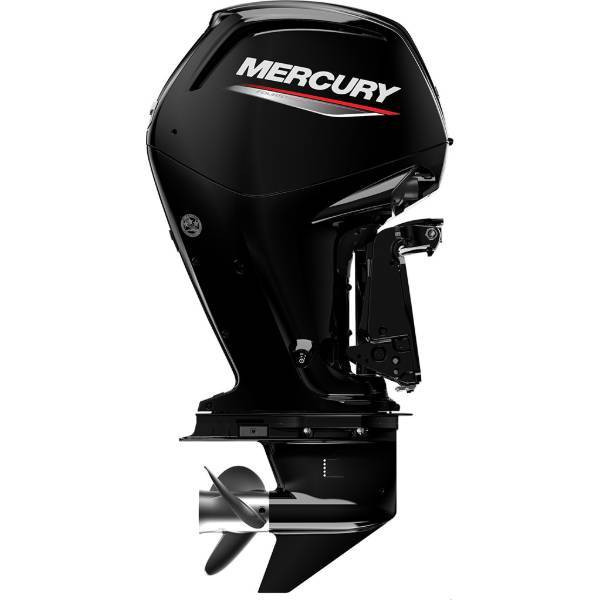
Sub Categories

Evinrude / Johnson

Force, Chrysler

Mercury, Mariner
__53278.original.jpg)
Nissan, Tohatsu
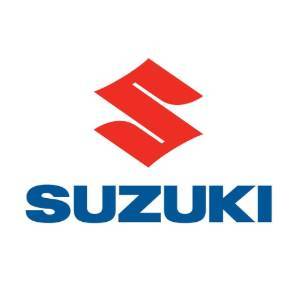
There are no products listed under this category.
- (678) 322-7877
- 9605 Jot Em Down Rd. Gainesville, GA 30506.
Boat Propeller 101: Frequently asked questions
Is boat propeller selection important .
Yes! After the engine, boat propeller is the essential component that gives your boat connection to the water and creates thrust to propel the boat forward. It is akin to tires on your car. You can feel higher performance handling when you’ve got the right tires.
Similarly, the right propeller gives the perfect balance of acceleration, top-end speed, and smooth ride. In addition, the right size and pitch of the propeller make it, so your engine doesn’t labor and cause unnecessary strain, which damages the engine.
For top-end speed, you want your engine’s maximum recommended rpm’s to be achieved, but not higher.
A propeller shop can make minor adjustments to the pitch and shape characteristics of a propeller to create the perfect balance of performance.

A professional boat shop can help you select the perfect propeller to maximize your boat’s performance.
What is the best metal for a boat propeller?
Boat propellers for recreational boats are made from aluminum, stainless steel, or bronze.
Aluminum is cost-effective. It is easy to repair and is the most common propeller choice. It’s a great choice for areas where your propeller may hit bottom. Aluminum propellers are common on small to medium-sized boats.
Stainless steel is a common propeller material for outboard or I/O motors. Stainless steel propellers are higher performance and priced accordingly. A stainless steel propeller is strong, so it can be machined thinner, so it’s less prop to spin through the water. It is also durable and corrosion-resistant.
Stainless steel propellers can withstand high speeds and may be used on high-performance and heavy boats alike because of its strength, durability, and resistance to harsh environments.
Bronze is a propeller material commonly used with inboard engines. Bronze is strong, has excellent corrosion resistance, and resists flexing and fatigue.

Stainless steel propellers are used on high-performance boats because of their strength and durability.
How many blades are best on a propeller?
From an engineering hypothetical, a single blade propeller is the most efficient, but it would create an enormous amount of vibration and wobble. So a two-blade propeller is the most efficient. This is a common propeller on a small motor.
The more blades on a propeller, the more balanced it is. A three-blade propeller is the most common, offering a combination of performance and balance.
Four or five-blade propellers are useful on heavy boats providing maximum thrust while they also lift the stern. Efficiency and top speed may be decreased with more blades. However, less vibration results in a smooth, fluid ride.
Four and five-blade propellers are also utilized in high-performance applications where the propeller may break the water surface. More blades create an increased blade area to grab into the water to continue to thrust the boat forward.
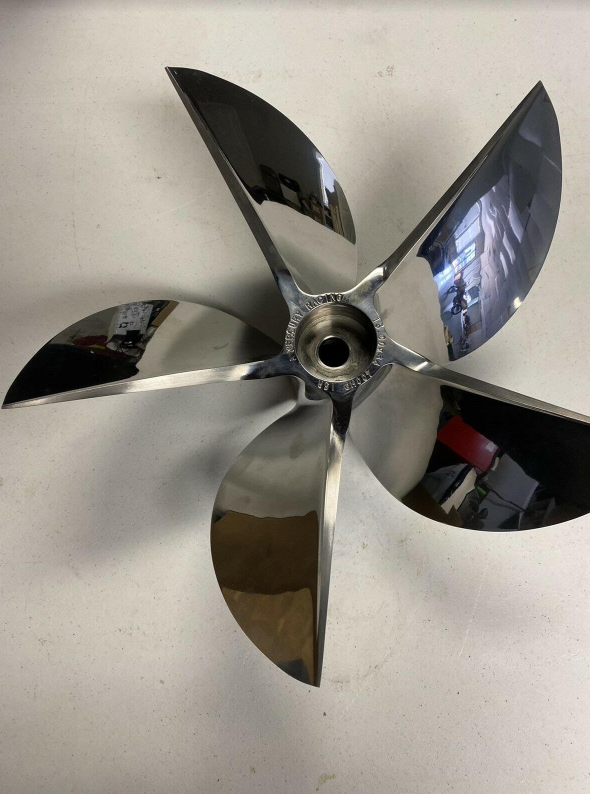
This cleaver style high-performance racing propeller has five blades. This style grabs the water again quickly after the boat goes airborne.
What do the numbers signify on a propeller?
The numbers on the propeller reflect the diameter and the pitch. The diameter is measured from the center of the propeller to the tip of the blade and is doubled to give the full size of rotation.
The pitch of the propeller refers to how many bites the blades take. It is measured by how much the propeller would move forward if it carved through a soft solid material.
For example, if the propeller was 13 ½ x 21 it has a 13 ½ inch diameter and theoretically would move 21 inches forward with one full revolution.
How much do boat propellers cost?
Aluminum props cost the least compared to other materials. On average, an aluminum propeller costs $160- $220.
Stainless steel propellers cost $400 – $800 depending on characteristics.
Bronze propellers cost $500 and up.
What can a machine shop do for a boat propeller?
A propeller shop can fix small bends, nicks, and properly balance a propeller. They can also add cup to the trailing edge of the propeller to increase pitch slightly and decrease engine RPM’s, while increasing speed.
A trip to the propeller machine shop can run $200 – $400, so sometimes replacement makes more sense. This is especially true of lower-cost aluminum propellers. However, the more expensive the propeller, the more economic sense it makes to use the machine shop.

Propellers last for years if they don’t hit ground. If a propeller has a vibration, a propeller machine shop can bring it back into balance.
What is the optimal max engine RPM’s for a propeller?
An outboard engine will run between 5000-6000 rpms, and sometimes higher. Check the manufacturer’s recommendation.
An inboard engine may run 3400-3800 and sometimes higher. The engine manufacturer gives specific recommendations so you don’t over prop, or conversely, run consistently at too high of RPM’s.
What is cavitation and ventilation?
Cavitation is the formation of air bubbles on the propeller, often caused by damage to the propeller-like dings or a slight bend. It causes vibrations and reduces the propeller’s ability to bite. A telltale sign are pits in the propeller from burns.
An interesting phenomenon is that water can actually boil at a low temperature if air pressure is reduced enough. This occurs during propeller cavitation and is what causes burns and pitting on a propeller.
Ventilation is the sucking in of surface air, commonly from jumping the boat out of the water, or trimming the motor too high. Ventilation can cause the engine to over-rev. Special propeller characteristics may be utilized to minimize the effects of ventilation.
What are the signs I need a different boat propeller?
- There’s undesirable vibration
- Can’t reach a reasonable top speed
- Improper acceleration
- Cavitation causes the propeller not to bite properly
- Your RPM’s don’t reach the recommended max engine speed
- Your top-end RPM’s exceed the recommended max engine speed
- There is physical propeller damage from hitting bottom

Lakeside Marine is voted Best Boat Repair Shop on Lake Lanier and can assist you with all of your high performance boat needs, including propellers.
Conclusion:
Propellers have many characteristics that can be engineered into them. It is amazing science behind them. If you believe you need a new propeller for any of the above reasons, consult a professional shop like Lakeside Marine.
Lakeside Marine’s performance professionals can research your boat’s engine and model specs. We will assist you in choosing the perfect propeller that gives you acceleration, top-speed, and a smooth ride. Then, call Lakeside Marine today for all of your boat repairs and upgrades at (678) 322-7877.
Contact Us for Boat Propeller Service
NEVER MISS A POST
Sign up for free and be the first to get notified about updates
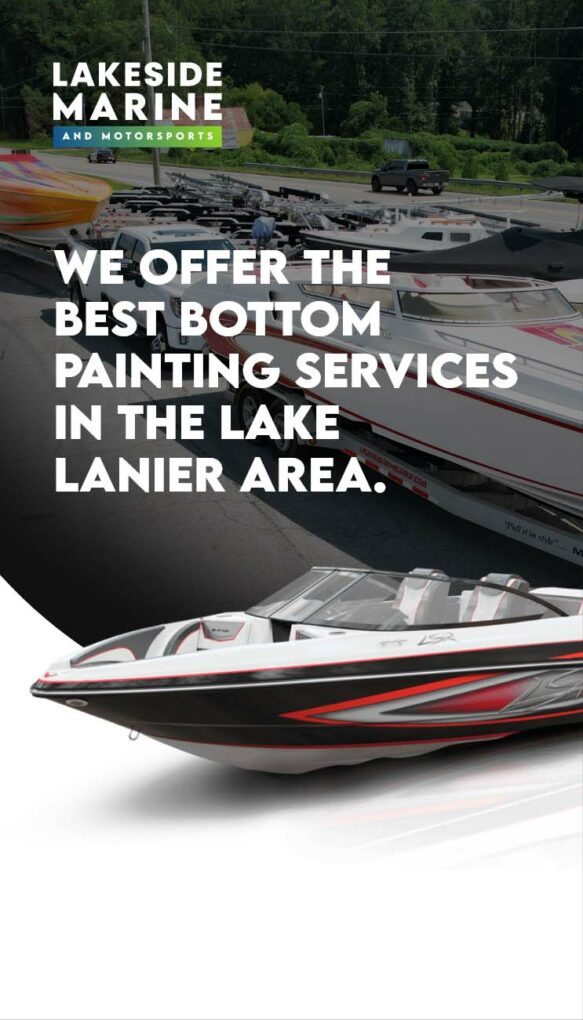
Advantages of a Center Console Boat
May 26, 2022
Center console boats are akin to the SUV's of boats. You sit up high, they're sturdy, utilitarian, and a blast to drive. The primary advantages of a center console boat are ease of operation, superior view from the center helm, clear access to all sides of the boat,...

How Does Marine Audio Equipment Differ?
Apr 7, 2022
Marine Audio equipment is specially designed and manufactured to perform in the harsh conditions of the marine environment: sun, rain, spray, salt, and the shock of pounding waves. Marine audio equipment is either waterproof or highly water-resistant. The internal...

25 Advantages of Outboard Motors
Jan 16, 2022
There are many advantages to outboard motors. The primary benefits are lower up-front cost, lower weight, higher speed, and ease of maintenance. To be sure, there are also advantages to inboard motors and stern drives, and we will explore these. In this easy-to-follow...
Submit a Comment Cancel reply
Your email address will not be published. Required fields are marked *
Save my name, email, and website in this browser for the next time I comment.
Submit Comment
- 2024 BOAT BUYERS GUIDE
- SWS ADVENTURES
- Email Newsletters
- Fishing Boat Reviews
- Fly Fishing
- Marine Electronics
- Fishing Tackle
- Fishing Destinations
- The Bahamas Fishing Guide
- Boating Safety
- Ultimate Boat Giveaway

Best Boat Trolling Motor Features for Saltwater Fishing
- By Ric Burnley
- August 21, 2024
The trolling motor was invented in 1934, but the first saltwater models didn’t hit the water until a decade ago. Why did it take almost 90 years for the trolling motor to reach coastal anglers? Durability. Combining saltwater, metal and electricity is a recipe for corrosion-forming electrolysis. Freshwater trolling motors died in salt and early saltwater models struggled to survive.
The latest generation of saltwater trolling motors feature durable components and smart design to thrive in the harsh marine environment. Leading the way, Garmin’s Force Kraken trolling motor is built with tough components and advanced features for the ultimate in boat control to catch more fish.
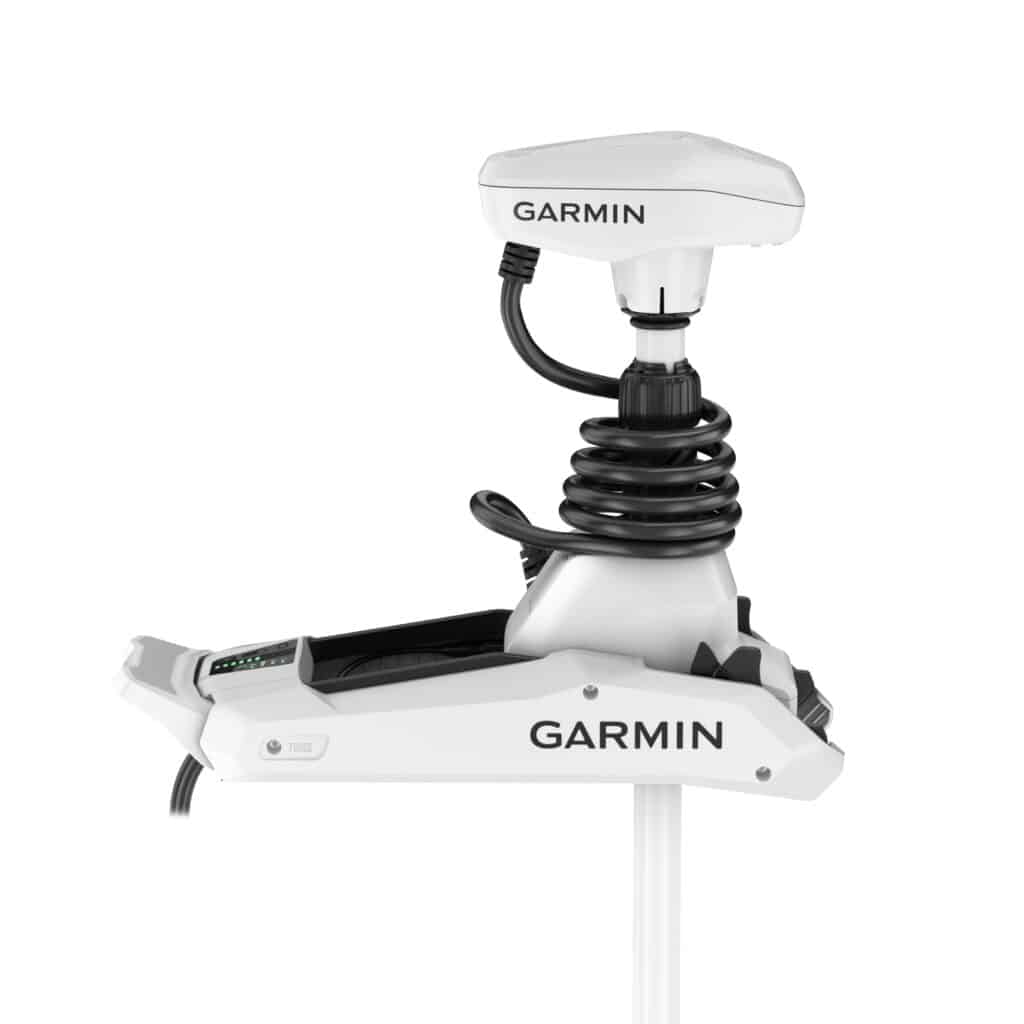
What Is a Trolling Motor for Saltwater Fishing?
The first trolling motors were small electric kickers that attached to the stern of a jon boat. Bass anglers quickly realized the advantage of mounting an electric motor on the bow to silently maneuver the boat while fishing. Before long, a trolling motor was standard equipment on a bass sled. But the technology has been slow to reach saltwater.
A trolling motor is a small electric motor on a long shaft powered by large, rechargeable batteries. The shaft is mounted on the boat to hold the motor below the water. Using a hand control, remote control or foot pedal, I direct the motor to position the boat with more accuracy than possible with a gas outboard. With a trolling motor, I can silently troll for skittish fish, sneak into shallow water, patrol an area, maneuver handsfree and hold my boat in one position while I fish.
Trolling Motor Innovations
Modern trolling motors have some amazing features. The most significant advancement is connecting the trolling motor to a GPS network. With the satellite location information, I can program my trolling motor to follow a course, repeat a course, return to a location, jog at a low speed, and more. When I push the anchor lock button, the GPS manipulates the trolling motor so my boat stays in one position.
Manufacturers have focused on durability and power improvements to bring the technology to saltwater anglers. To survive salt and sand that plagues coastal fishing equipment, saltwater trolling motors like Garmin’s Force Kraken use corrosion-resistant materials, redundant systems, and sealed electronics.
The next challenge was generating power to pull a large saltwater fishing boat in strong current and wind. To produce enough torque to move heavy boats, the best saltwater trolling motors use brushless motors that draw less electricity and create more power. Garmin’s Force Kraken can produce up to 100 foot pounds of thrust with a shaft length up to 90 inches to run boats up to 35 feet long.
With the invention of forward-facing and 360 sonar, the trolling motor has become a convenient place to mount the sonar transducer. Attaching the transducer to the motor head, I can turn the transducer to direct the signal at potential targets while watching the return on a multi-function display.
Speaking of the fish finder display, Garmin’s Force Kraken trolling motor uses wireless connection to integrate with Garmin’s electronics systems. I control the Kraken with a handheld remote control, wireless foot pedal, smartphone or smartwatch. Combining these user-friendly features with a durable electric motor large and powerful enough to fish offshore and inshore, Garmin’s Force Kraken is a perfect example of the capabilities of modern saltwater trolling motors.
8 Top Saltwater Fishing Electric Trolling Motor Features
Adding GPS control and forward-facing sonar completely changed the trolling motor game. The small electric motors are now a boat control and fish-finding weapon. With the Garmin Force Kraken and other modern trolling motors, I program routes, hold my boat in one place, search fish in every direction and fish all day without worrying about battery power. Today’s trolling motors have a long list of features aimed at making fishing easier and more fun.
Anchor Deployment Capabilities
Without a doubt, the Garmin Force Kraken’s virtual anchor is its most valuable feature. I push a button on the remote and the trolling motor works to hold the boat in place. Garmin’s Force Kraken uses a two band GPS for pinpoint accuracy and lightning fast steering response.
Most trolling motors spin the motor 360 degrees to move the boat forward and backward. Instead of turning the whole motor, The Force Kraken uses a reverse gear which creates less turbulence and responds quicker saving time and energy. In swift current and strong wind, the Force Kraken controls my boat without missing a beat.
Garmin LiveScope Compatibility
In addition to advanced boat control capabilities, Garmin’s Force Kraken and other top-end trolling motors offer me a place to mount my forward facing sonar transducer. Forward-facing and 360 sonar allow me to see fish and structure in every direction below the water. The transducer turns 360 degrees to search for fish and structure up to 200 feet from the boat.
Some anglers mount the transducer to the end of a pole that is attached to a bracket on the side of the boat. Garmin’s Force Kraken allows me to mount the LiveScope transducer on the motor. To direct the sonar signal, I turn the trolling motor in the direction I’m searching. I route the transducer cable through the trolling motor shaft for a clean install and less chance of damaging the cord.
Battery Performance
Battery performance is a trolling motor’s Achilles heel. The electric motor runs on large batteries with limited capacity. Sealed lead-acid marine batteries are the standard; lithium batteries are lighter and more durable with longer battery life.
To extend the battery life, Garmin’s Force Kraken’s brushless motor conserves energy and produces more power than a brushed motor. Also, the efficient propeller and reverse gear reduce the motor’s work load. Running off 36 volts (that’s three 12 volt batteries), the Kraken will produce 100 pounds of thrust for hours of fishing.
User-Friendly Remote and Foot Pedal Control
A trolling motor is all about boat control, so controlling the motor is key to catching more fish. Garmin’s Force Kraken offers a floating, wireless remote control, a wireless foot pedal or integration with a smartphone or smartwatch. I can even operate the motor with my fish finder display.
The best trolling motor remotes have large, intuitive buttons and a small LED display of motor information. To operate the motor while I’m casting my fishing rod, a wireless foot pedal promotes hands-free fishing.
If the wireless systems fail, I can still control the motor with my phone. A few basic features, like anchor lock, are accessible on the base of the motor. When I’m searching for fish, I use the foot-pedal to cast and retrieve while covering water.
The handheld remote gives me quick access to anchor lock and other programming features. To unlock the motor’s full potential, I use the app and wireless connection to my fish finder to program routes and make precise location adjustments.
When the current is ripping and the wind is whipping, a trolling motor struggles to control a big boat. Garmin Force Kraken has a Turbo Mode that increases the power and torque for short periods when I need it most. Kicking the motor into Turbo Mode helps me limit power usage by saving maximum speed for the toughest motoring conditions.
Minimal Prop Wash and Obstruction Quick Reverse
A trolling motor quietly maneuvers the boat while I’m fishing. To prevent spooking the fish, Garmin’s Force Kraken combines an optimized propeller and silent operation. The propeller creates minimal bubbles and no cavitation and the shaft turns smoothly. When the boat is in anchor lock mode, the propeller spins forward and reverse instead of the shaft constantly spinning to keep the boat in one place.
Pivot Style Mount
Most saltwater boats don’t have a wide open deck in the bow like a bass boat. Garmin’s Force Kraken uses a small pivot style mount to secure the motor with a minimal footprint.
When I arrive to the fishing grounds, I rotate the shaft to unlock the release and then slide and pivot the motor head into the water. The pivot mount is easy to remove from the boat and requires less space in the bow, so it fits more saltwater boats.
Composite Shaft
A long shaft on a large saltwater boat takes a lot of abuse. In rough seas, the powerful motor wants to bend and break the shaft. Saltwater trolling motors have an indestructible and corrosion resistant composite shaft. The best saltwater trolling motors, like Garmin’s Force Kraken, have a shaft that includes a conduit to route a fish finder transducer cable.
The final choice is choosing the shaft length. The trolling motor’s composite shaft reaches from the bow to below the water. Measure the distance and choose a shaft length that will keep the motor below the water in rough seas. An easy-to-use online tutorial makes it easy to build a total boat system.
Garmin’s Force Kraken is available in four sizes, from 48 inches to 90 inches, to cover boats from 18 feet to 35 feet long. The price at Bass Pro Shops depends on the shaft length, with a 48-inch model going for $3799.99 to $4299.99 for the 90-inch motor.
Alternatives to the Garmin Force Kraken
It’s a good time to be in the market for a trolling motor. The most advanced technology is now available for saltwater trolling motors with up to 115-pounds of thrust and a 100-inch shaft. And the latest motors are finally winning the battle against corrosion with space-age materials and design. The race is on to create the most advanced trolling motor that is easiest to use. All this is great news for saltwater anglers looking to add a trolling motor to their boat.
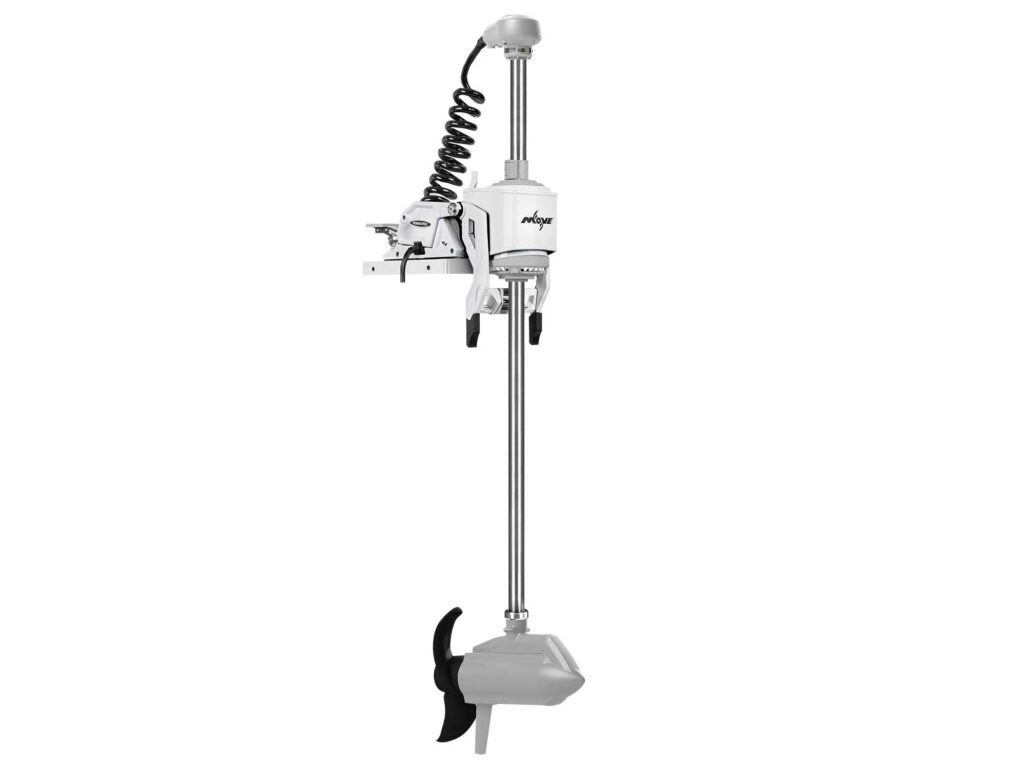
Heavy Duty: Power-Pole Move PV
Power-Pole’s primary objective when they designed their first trolling motor was durability. They satisfied that objective with a bulletproof brushless motor, reinforced propeller, titanium shaft and redundant systems.
The Move PV is part of Power-Pole’s total boat control system to link with their shallow-water anchors to stop and propel the boat with one remote. Of course, the Move includes all the advanced GPS features expected of a top-of-the-line trolling motor.
Price: $5599.99 – 72”
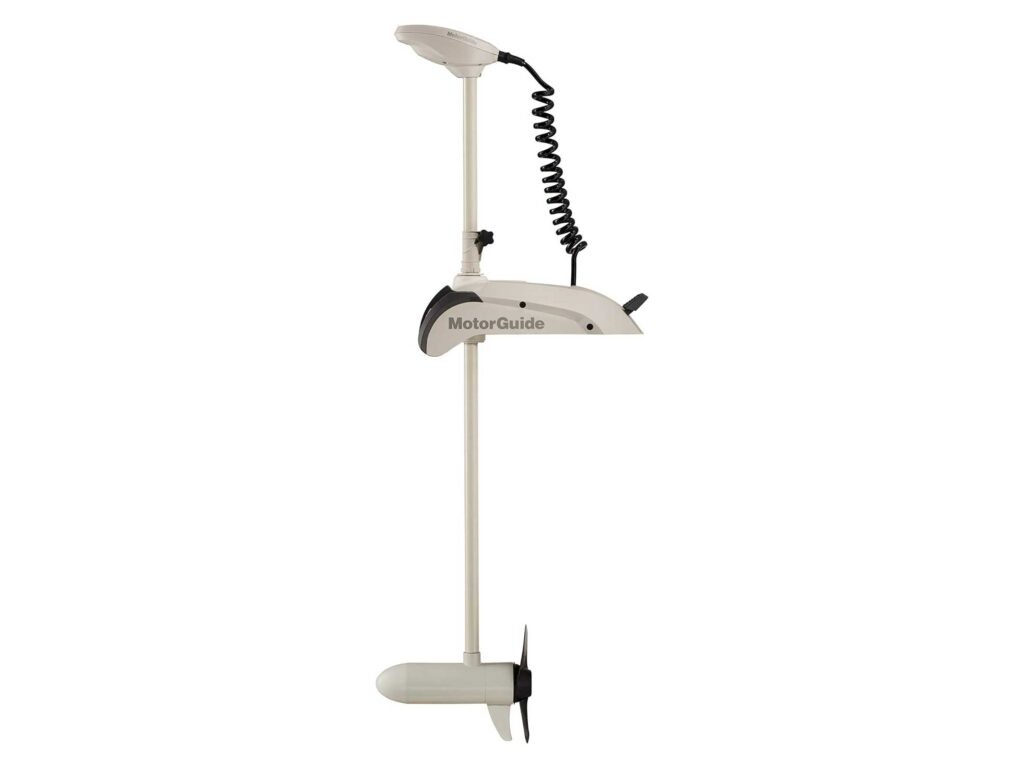
Budget Friendly: MotorGuide Xi5
MotorGuide’s Xi5 is a classic saltwater trolling motor that provides advanced features at a great value. I control the Xi5 with a handheld remote or wireless foot pedal. The trolling motor integrates with Lowrance, Simrad and Mercury Marine electronics. A pin-point accurate GPS allows me to jog the boat, follow a course and lock the boat in position. The Xi5 has been around for years, a testament to its durable composite shaft, sealed electronics and corrosion-resistant coatings.
Price: $2549.99 – 72”
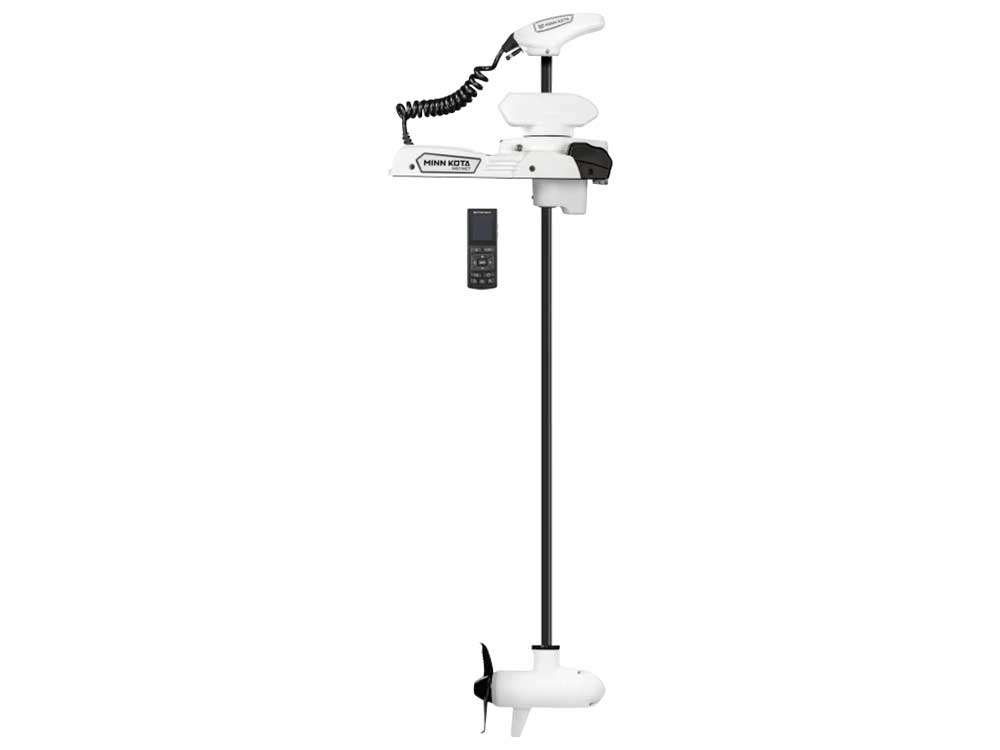
Big Boats: Minn Kota Riptide Instinct Quest
Minn Kota started the trolling motor game and stays ahead of the competition with the largest and most powerful trolling motors. With shafts up to 100 inches and 115 foot-pounds of thrust, the Riptide Instinct Quest motor is appropriate for boats over 35 feet long. Minn Kota’s Riptide Instinct Quest includes a brushless motor , GPS control, electronics integration and power-saving features expected in a premium trolling motor for saltwater.
Price: $4699.99 – 72”
Elevate Your Fishing With Advanced Trolling Motor Features
Trolling motors for saltwater are more powerful and durable than ever before. I use my trolling motor to troll, power drift, fish structure and silently search for fish. Trolling motors may be new to saltwater fishing, but the advanced boat-control features make me wonder how I ever lived without a trolling motor on my saltwater boat.
What is the difference between a trolling motor and an outboard motor?
A trolling motor is a small electric motor used to maneuver the boat while fishing. A gas-powered outboard quickly propels the boat to and from the fishing grounds. The trolling motor is less powerful and slower, but the motor spins 360 degrees so I can turn the boat quickly and accurately without the noise and commotion of a gas engine. I use my gas motor to travel to my fishing spot, then I turn off the outboard and drop the trolling motor into the water. With the small electric motor, I precisely position the boat to cast or jig more accurately.
How do I know what size trolling motor I need?
Each trolling motor manufacturer has online tutorials and guides for choosing and fitting a trolling motor to any boat. The rule of thumb is a longer and heavier boat requires more thrust and a longer shaft.
How fast can a troll motor go?
A trolling motor isn’t designed for speed. However, a trolling motor must have enough power and torque to control the boat in adverse weather and water conditions. Garmin’s Force Kraken has a special Turbo Mode that boosts power when the going gets rough. It also uses a silent and responsive steering unit and a unique reverse gear to improve boat control and save battery power.
- More: Affiliate , Gear , Trolling Motors

Spotlight on Quantum

What to Look for in a Live Bait Tank for Saltwater Fishing

Salt Water Sportsman’s Deals of the Week
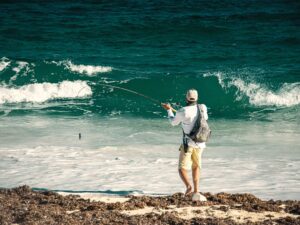
The Latest Trends in Travel Fishing Rods

ODYSSEY Battery: Ask the Internet
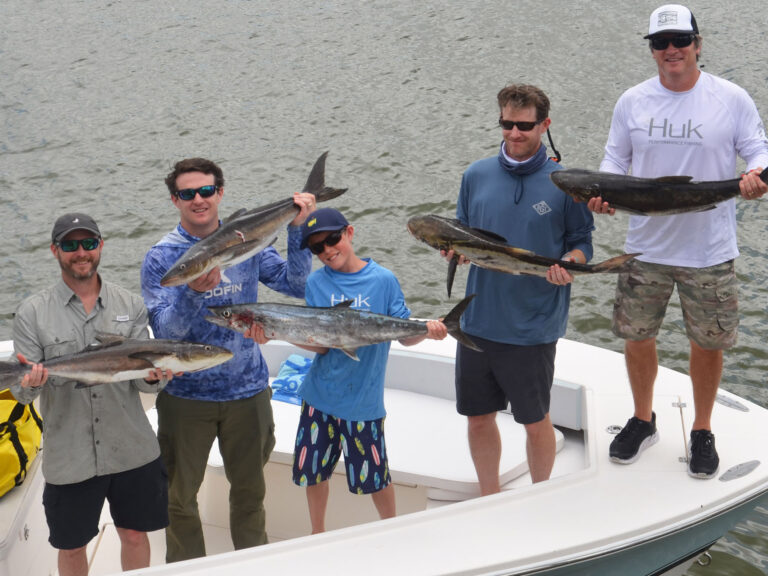
More Restrictive Cobia Regs Expected for Virginia
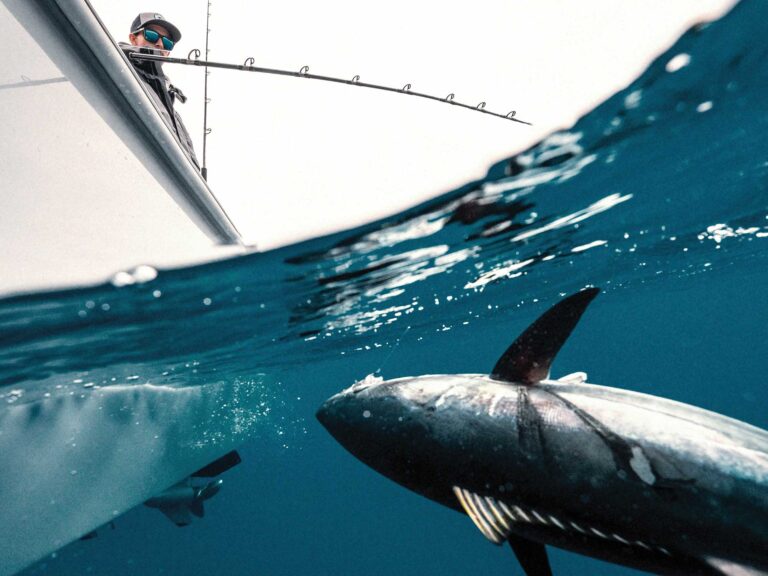
West Coast Rail-Rod Techniques to Catch Huge Tuna
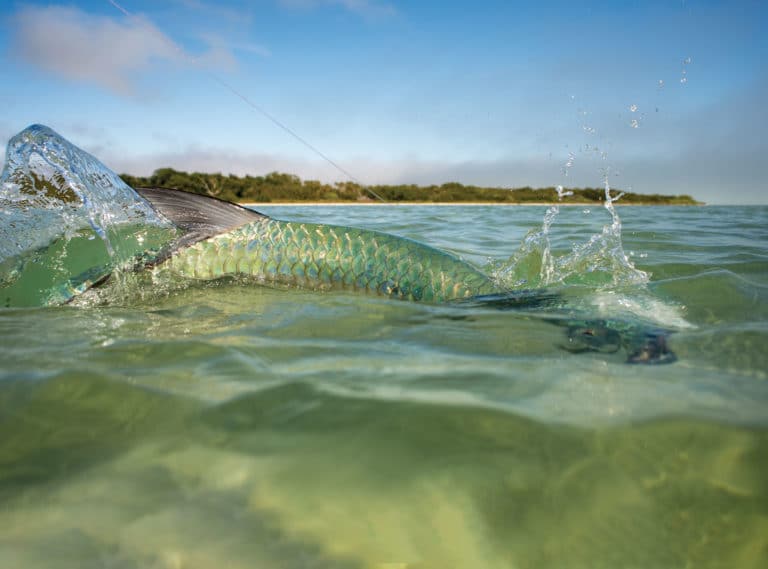
How to Catch Tarpon in Florida Year-Round

- Digital Edition
- Customer Service
- Privacy Policy
- Terms of Use
- Cruising World
- Sailing World
- Salt Water Sportsman
- Sport Fishing
- Wakeboarding

IMAGES
COMMENTS
Finding the correct propeller for you boat is easy with our Prop Guide. Step 1: Select the Type of Engine. Step 2: Select Engine Manufacturer. Step 3: Select the HP for your marine engine. Step 4: Select the year of your marine engine. or. If you have the existing part # that is stamped on your boat propeller, you can find all matching props here.
However, some outboards rotate them counterclockwise, particularly dual-motor setups where one motor runs clockwise and the other counterclockwise to balance the engines. Prop Blades The number after the prop size and rotation letter (ex: 14x19 R 3, 15x26 L 4) indicates how many blades the propeller has.
Outboard Propellers. Propeller Depot has the largest inventory and lowest prices on all outboard boat propellers. Propeller Depot stocks the entire line of Michigan Wheel and SOLAS outboard boat propellers. You will not find lower prices on the best aluminum and stainless steel outboard boat props.
Choose a range of propellers to perform a water test. Test the props under the same conditions that you would typically use the boat—same load, gear, and water. Set the trim angle so the boat has optimum speed on top of the water. To test the prop, run the boat at WOT and observe the maximum engine RPM on a tachometer.
A Guide To Boat Propellers: Types, Materials, Maintenance, and Upgrades. January 25, 2024. Discover the various of boat propellers, including fixed, folding, and feathering propellers. Learn about the used, such as stainless steel, aluminum, and composite. Find out how to choose the right prop based on boat size, engine power, and boating ...
Ventilation: This problem occurs when air from the surface or exhaust gas from the engine gets drawn into the prop's blades. The boat's speed drops, the engine over-revs and screams, and the prop sucks air. Ventilation results from excessively tight turns, a motor that is mounted too high on the transom, or an engine that is over trimmed.
Ski boats need more top end speed, and should choose a prop with a higher pitch. Cruisers and houseboats need more performance at displacement speeds, and should use a prop with a lower pitch to achieve low-end power. It is imperative, however, that the WOT r.p.m. fall within the range specified by your engine manufacturer.
Feathering propellers. Dual-props. Surface-piercing propellers. Toroid propeller. Knowing which boat propeller is best. About us. Last Updated on October 12, 2023 by Boatsetter Team. Most boats are driven by propellers and there are many kinds and sizes. The optimal choice of propeller will depend on boat type, length, weight, use, and engine ...
The propeller is the single, critical link between an outboard motor and the water. The only way all that horsepower gets turned into forward motion is through the prop, which is why it's important for both performance and fuel economy to have the correct propeller on your boat. Horsepower to water only goes through the propeller, which is ...
Boat Props. Propeller Depot offers the best prices and service on all inboard, outboard, and stern drive boat propellers. You will be able to find the best boat propeller for your application, at the absolute best price. Order your boat prop today and save!
Propeller selector. Mercury Marine manufactures a complete range of propellers for many popular outboard and sterndrive engine brands - and just about any on-water activity. Using our Prop Selector will allow you to find the best props for your outboard, wake, stern drive marine engines. Launch the prop selector.
The Michigan Wheel XHS hub kit fits many outboards. The Slip: Too much blade flex for motors over about 250 hp, and a performance compromise compared to stainless-steel models. Price Range: Between $90 and $250, depending on size and brand. More: Boats, comparisons, Engines, October 2022, outboards, propellers.
Hub What It Is: This is the center round portion, sometimes called the barrel, or boss, of the propeller.What It Does: It is the attachment point for the blades and for some props; the hub also includes the center hub, which is typically splined to mate the prop to the propeller shaft. On many propellers, the engine's exhaust exits directly through the hub.
Higher-pitch propellers can push a boat faster provided the horsepower is matched to the prop so the engine can reach maximum recommended rpm. In general, for outboard and sterndrive powered boats, a 2" (5.08 cm) increase in pitch will reduce engine rpm by 300 to 400. Conversely, a 2" (5.08 cm) decrease in pitch will result in a 300- to 400 ...
Boat propellers are available in a wide assortment of sizes and shapes. Sizes are referred to in terms of diameter and pitch. To make the best selection, sync the propeller to the manufacturer's wide open throttle (WOT) range. The right propeller will turn the minimum engine RPM's required by the manufacturer with its throttle fully advanced.
Add To Cart. Solas 3-Blade Propeller, Pressed Rubber Hub / Aluminum, 14 dia x 11 pitch, Right Hand. 4 Reviews. $139.99. Save $15 off $99+ with code: AUGUST15. Add To Cart. Online Exclusive. Michigan Wheel 2-Blade Prop, Pressed Rubber Hub / Aluminum, 8 dia x 7.25, RH. $104.99 $154.99.
Replacing a boat propeller is something you'll probably need to do sooner or later, whether because of boat propeller repair, fuel savings, or improved boat ...
Product(s) Diameter Pitch Rotation # Blades Engine Type Material # Splines Hub Kit Price ; SOLAS Suzuki SG Dual Prop 15 1/2 x 25.5- Front Diameter: 15-1/2 inch Pitch: 25.50 Rotation: Left Hand (LH) # Blades: 3 Engine Type: Suzuki Material: Stainless Steel # Splines: 25 Tooth Spline Hub Kit: Not Required (rubber pressed in hub): 15-1/2 inch
The Solas Propeller Fit Guide will walk you through picking the right propeller for your boat engine's make, model and horse power. You can also select what type of boat configuration you have and the prop fit guide will suggest the appropriate prop. ... Outboard motor propellers usually have a rubber hub that is pressed into the propeller to ...
The Prop Shop stocks a large assortment of aluminum and stainless steel props for all makes of outboard motors including the following : Evinrude / Johnson , Force , Honda , Mercury / Mariner , Suzuki , Yamaha, and Nissan / Tohatsu. Brands stocked are Michigan Wheel, Quicksilver, Mercury, Powertech, OMC and Solas.
We will assist you in choosing the perfect propeller that gives you acceleration, top-speed, and a smooth ride. Then, call Lakeside Marine today for all of your boat repairs and upgrades at (678) 322-7877. Contact Us for Boat Propeller Service. Boat propeller is the essential component that gives your boat connection to the water and creates ...
Aluminum. Versatile Aluminum Propellers. When you demand performance and value, the Mercury Aluminum lineup delivers with props to handle a broad range of applications and horsepower. Learn More. Black Max®. Revolution X. Verado 12. High Five.
V/N Aluminum Outboard Propeller 1/4 x 17-K Compatible with Yamaha Engines 60HP 70HP 75HP 80HP 85HP 90HP 115HP 130HP- 15 Tooth-RH Replaces 6E5-45945-01-EL - Boat Motor Aluminum Propeller, white. 1. $7399 ($5.29/in) FREE delivery Sat, Jun 22. Only 16 left in stock - order soon.
Also, the efficient propeller and reverse gear reduce the motor's work load. Running off 36 volts (that's three 12 volt batteries), the Kraken will produce 100 pounds of thrust for hours of fishing. User-Friendly Remote and Foot Pedal Control. A trolling motor is all about boat control, so controlling the motor is key to catching more fish.